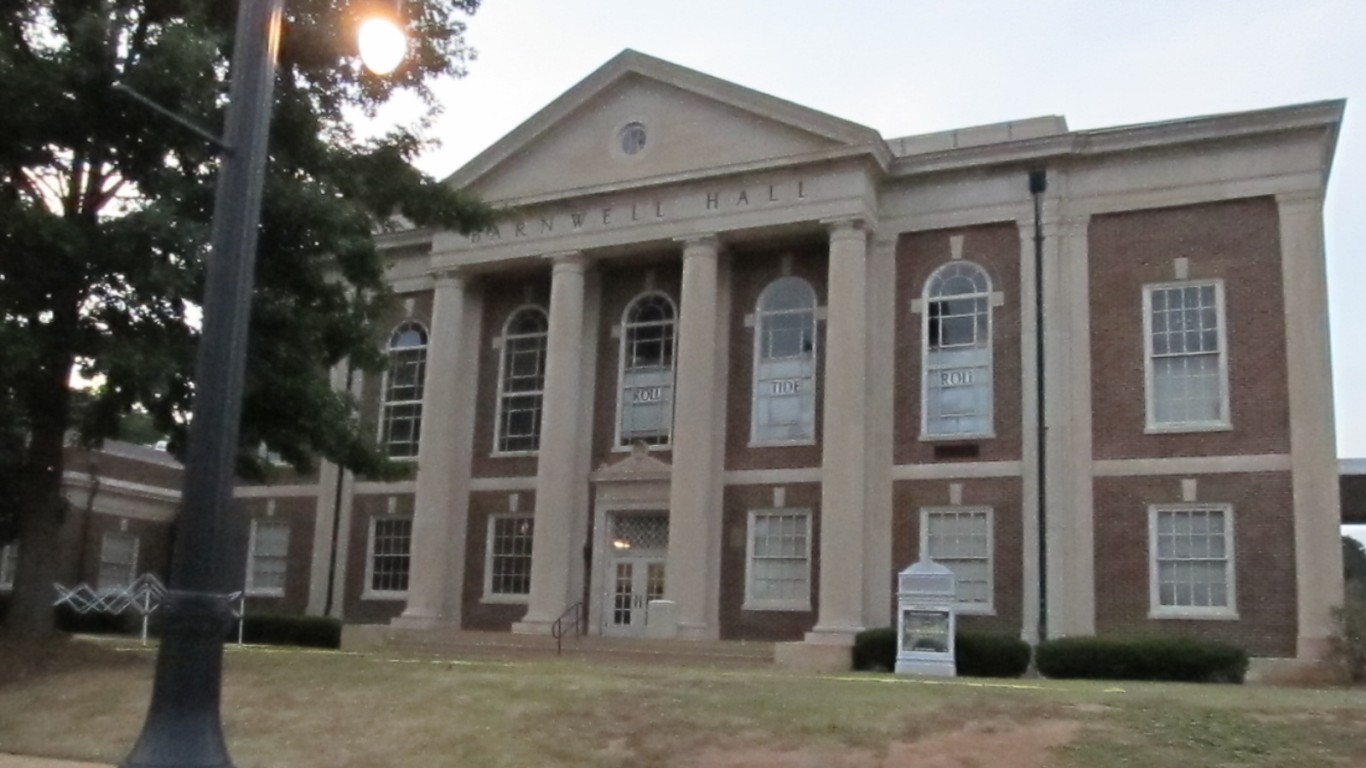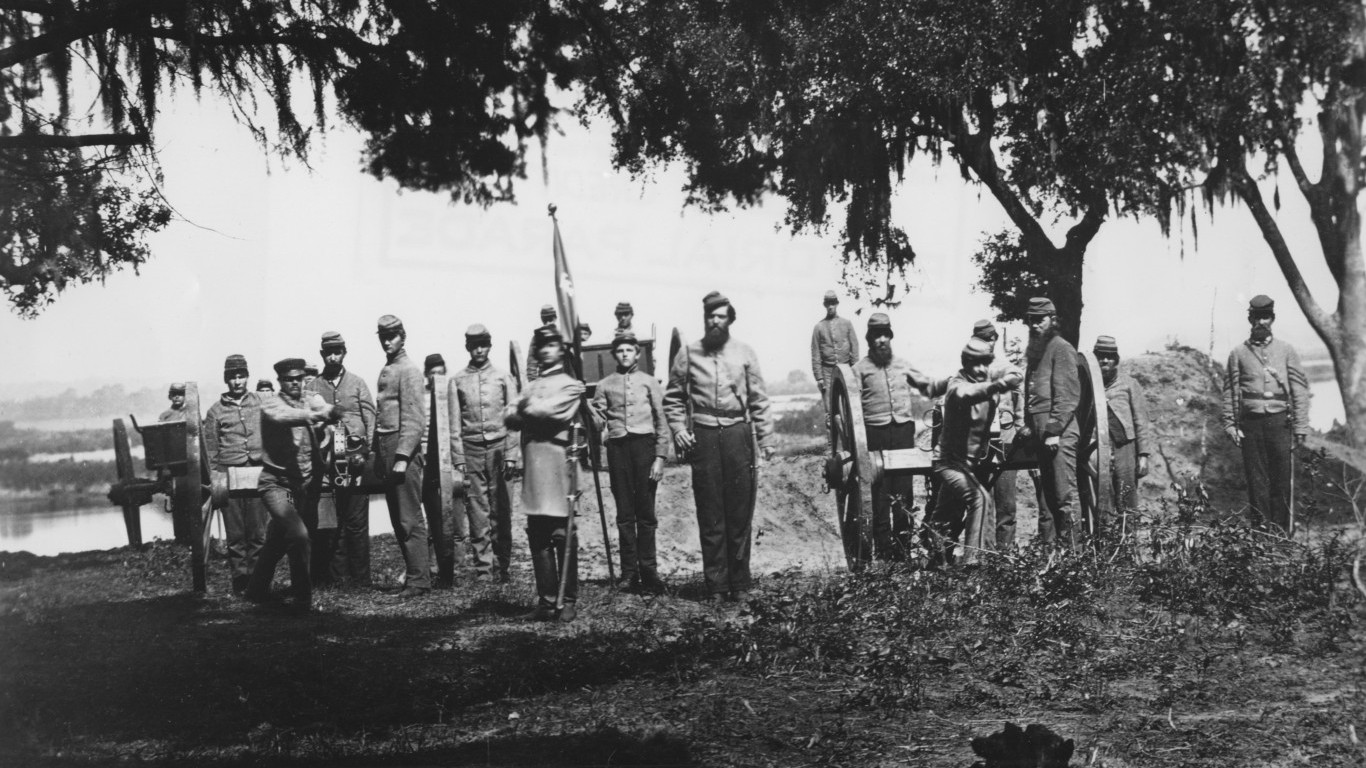
During the Civil War, many American cities and towns were intentionally destroyed as part of military strategy. Burning enemy cities served to disrupt supply lines and lower civilian morale. (Destruction of cities has been a hallmark of war for centuries. Here are 26 cities that were destroyed by war.)
To determine U.S. cities and towns destroyed during the Civil War, 24/7 Tempo consulted numerous online sources including Oxford Research Encyclopedias. Accidental fires that were not started as a result of war strategizing were excluded.
As most fighting occurred in the South, Union forces destroyed the majority of cities, with at least eight towns in Mississippi and multiple locations in several Southern states catastrophically damaged. Some were destroyed incidentally in battles, but many were deliberately targeted to eliminate key infrastructure.
Only three cities were burned by Confederates – two Southern cities they torched to prevent Union use, and one Northern city damaged when rebels made a rare offensive into Pennsylvania. These were the largest battles of the Civil War.
Click here to see the US cities and towns destroyed during the Civil War
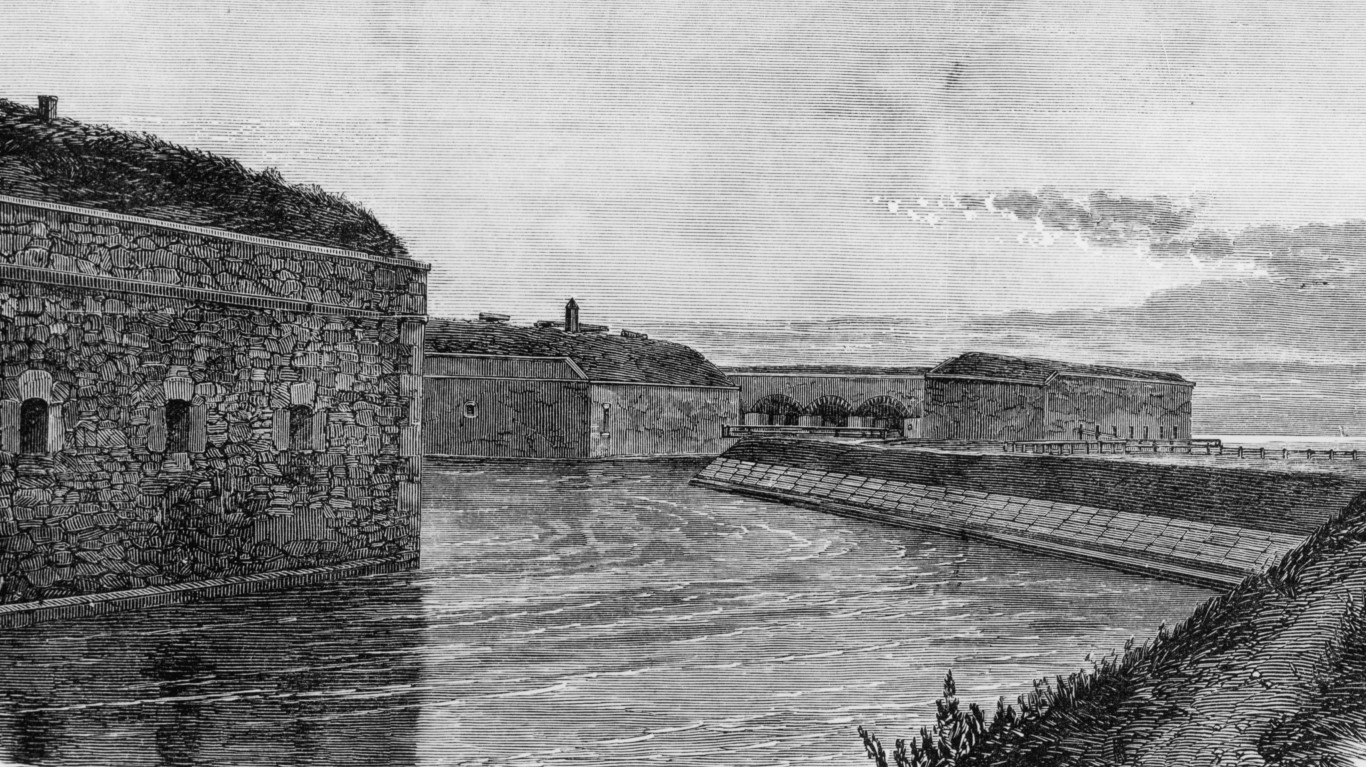
Hampton, Virginia
> When: August 7, 1861
This coastal city at the mouth of the Chesapeake Bay was the first to burn during the war. It was torched by its own inhabitants, Confederate soldiers who aimed to prevent it from falling into Union hands, as its proximity to nearby Fort Monroe made the thriving colonial city an enticing trophy. Over 130 businesses and homes were burned, as well as the courthouse and several churches.
[in-text-ad]
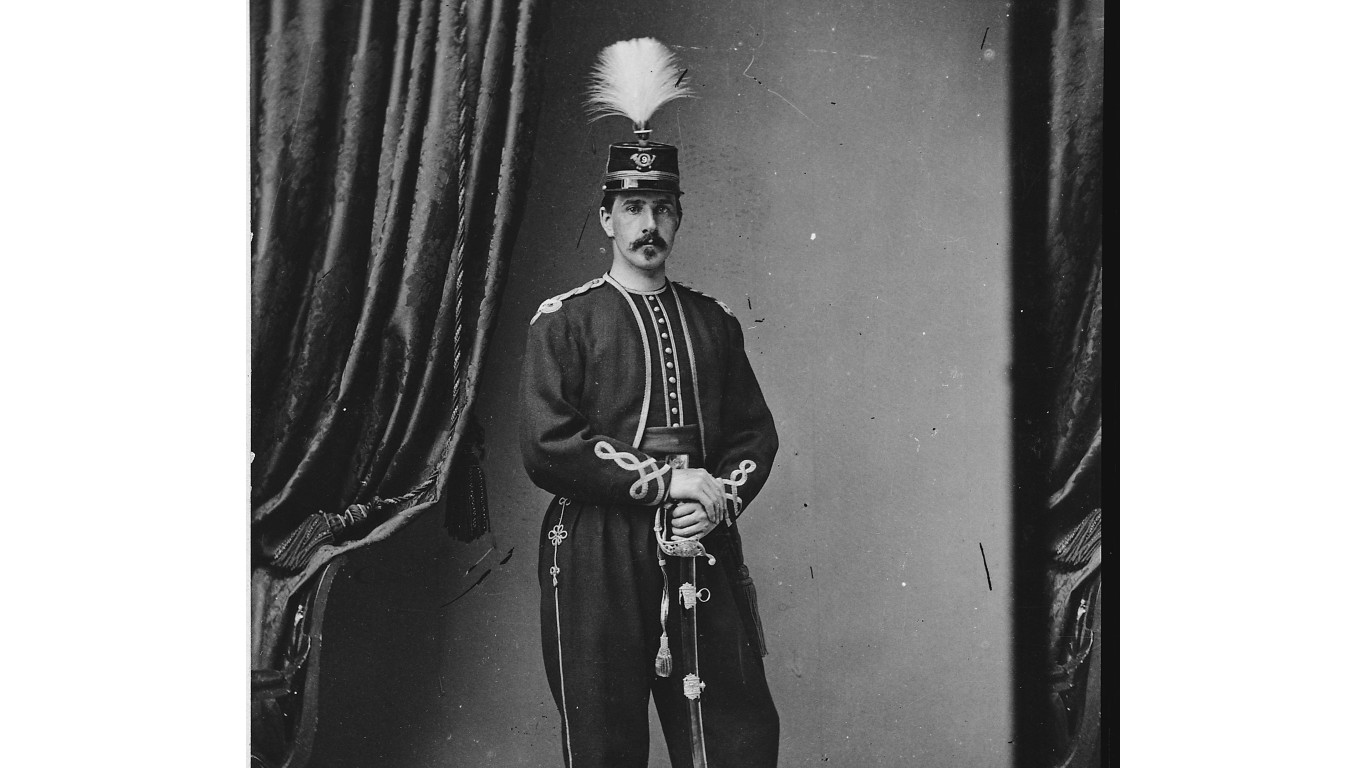
Winton, North Carolina
> When: February 20, 1862
Confederate forces fired upon a fleet of Federal gunboats as they approached this town on the Chowan River aiming to destroy a railroad bridge. Residents and soldiers alike subsequently abandoned the town, and the fleet returned the next day and set fire to confederate storehouses. The blaze consumed the courthouse and dozens of homes.
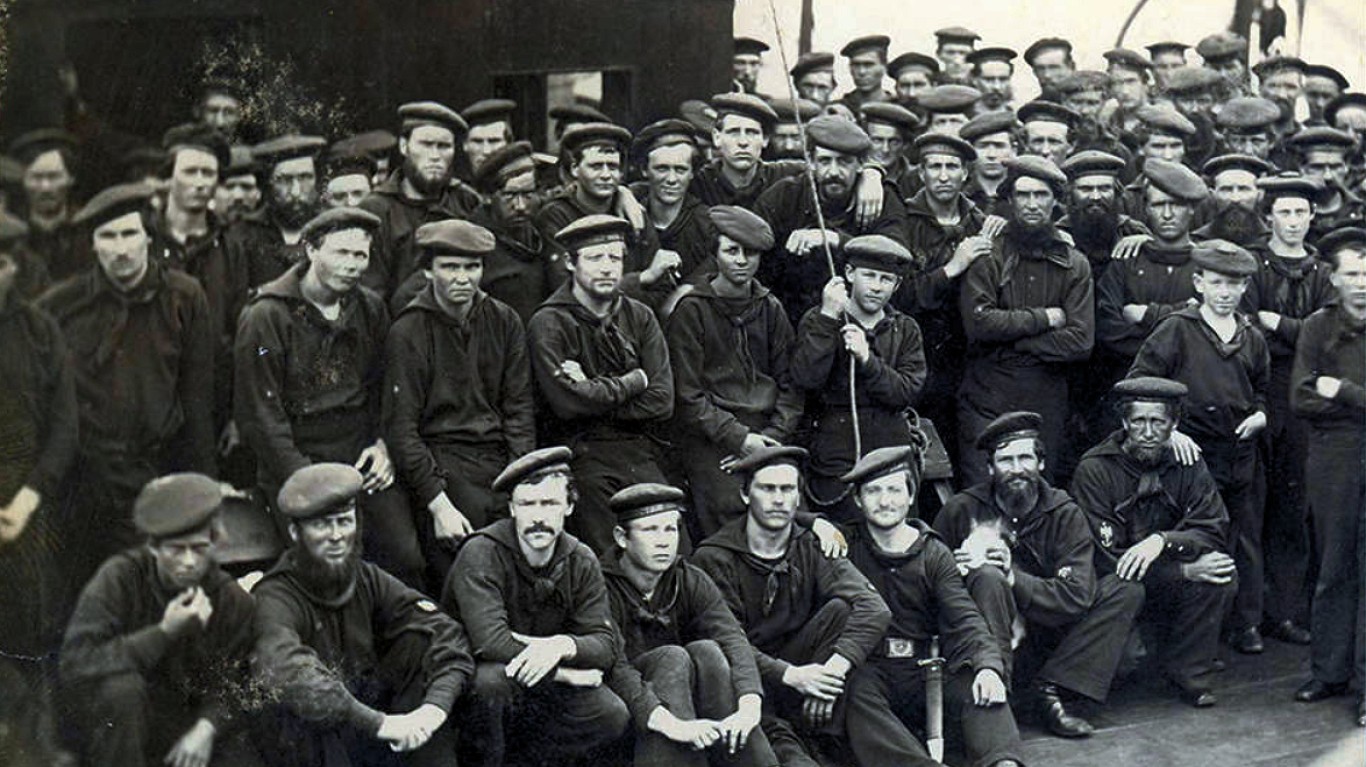
Baton Rouge, Louisiana
> When: August 5 & 21, 1862
Confederate ground and water forces attempted to overtake this Union-occupied city during the battle of Baton Rouge, but were unsuccessful. Nevertheless, a third of the city was destroyed by Union forces as they burned buildings near the river in an attempt to gain a clear line of fire. They abandoned the outpost on August 21, but not before looting and burning even more infrastructure.
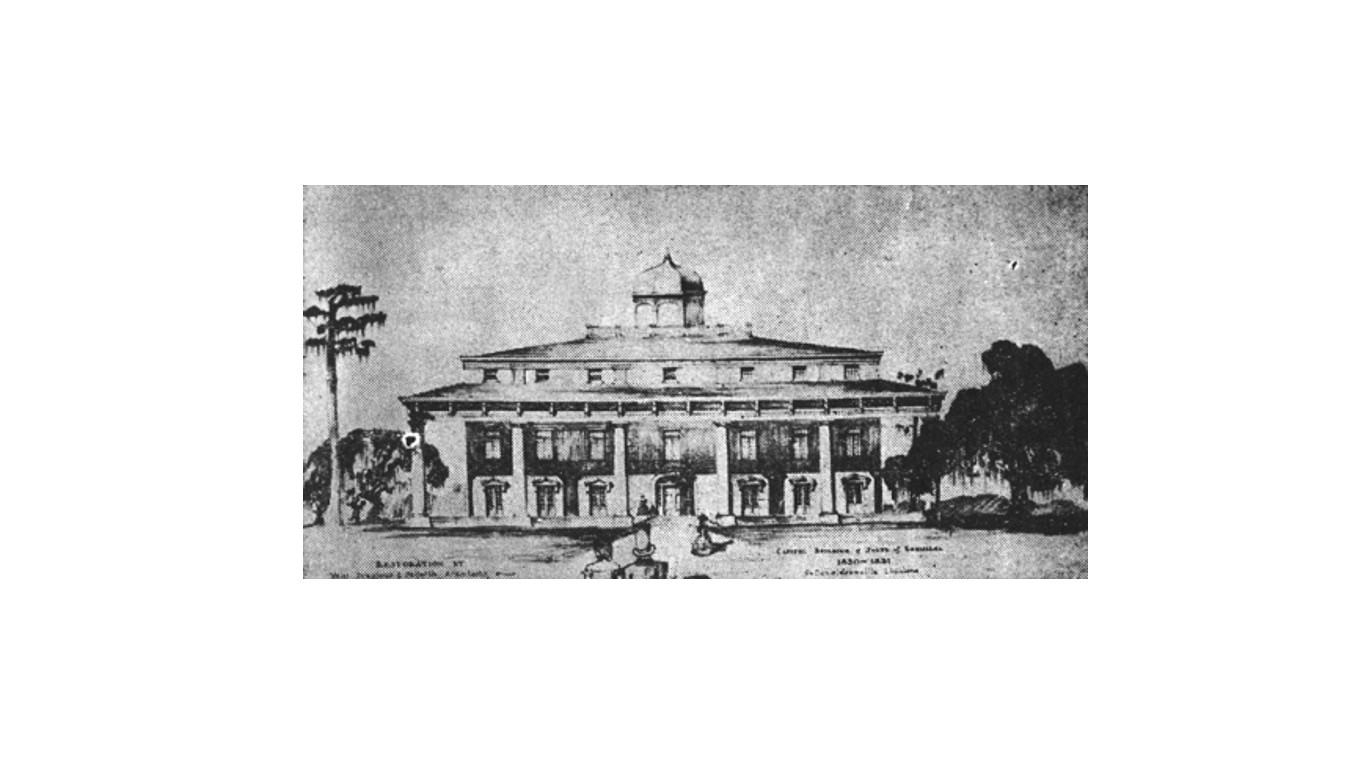
Donaldsonville, Louisiana
> When: August 10, 1862
After Union Navy vessels on the Mississippi were fired upon as they sailed by the former capital of Louisiana, they retaliated by anchoring in front of Donaldson and bombarding it. A detachment then went ashore and burned wharf buildings, hotels, Confederate storehouses, residences, and nearby plantations. Union forces subsequently occupied the town and put the whole of Ascension Parish under martial law.
[in-text-ad-2]
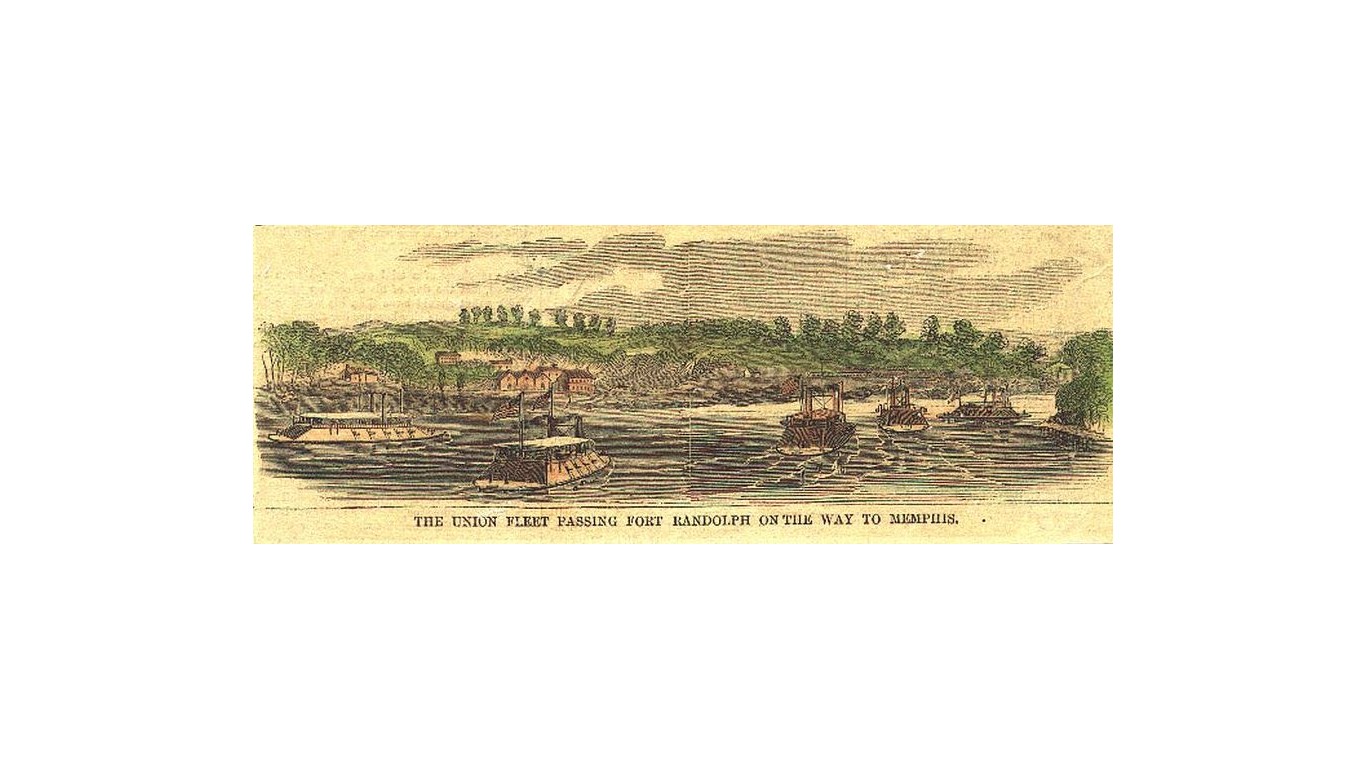
Randolph, Tennessee
> When: September 26, 1862 and 1865
The site of two Confederate forts along the Mississippi, this town about 30 miles north of Memphis was destroyed – with only one house left standing – under orders from Union general William T. Sherman in retaliation for its attacks on Union supply ships. Federal soldiers burned the town again in 1865.
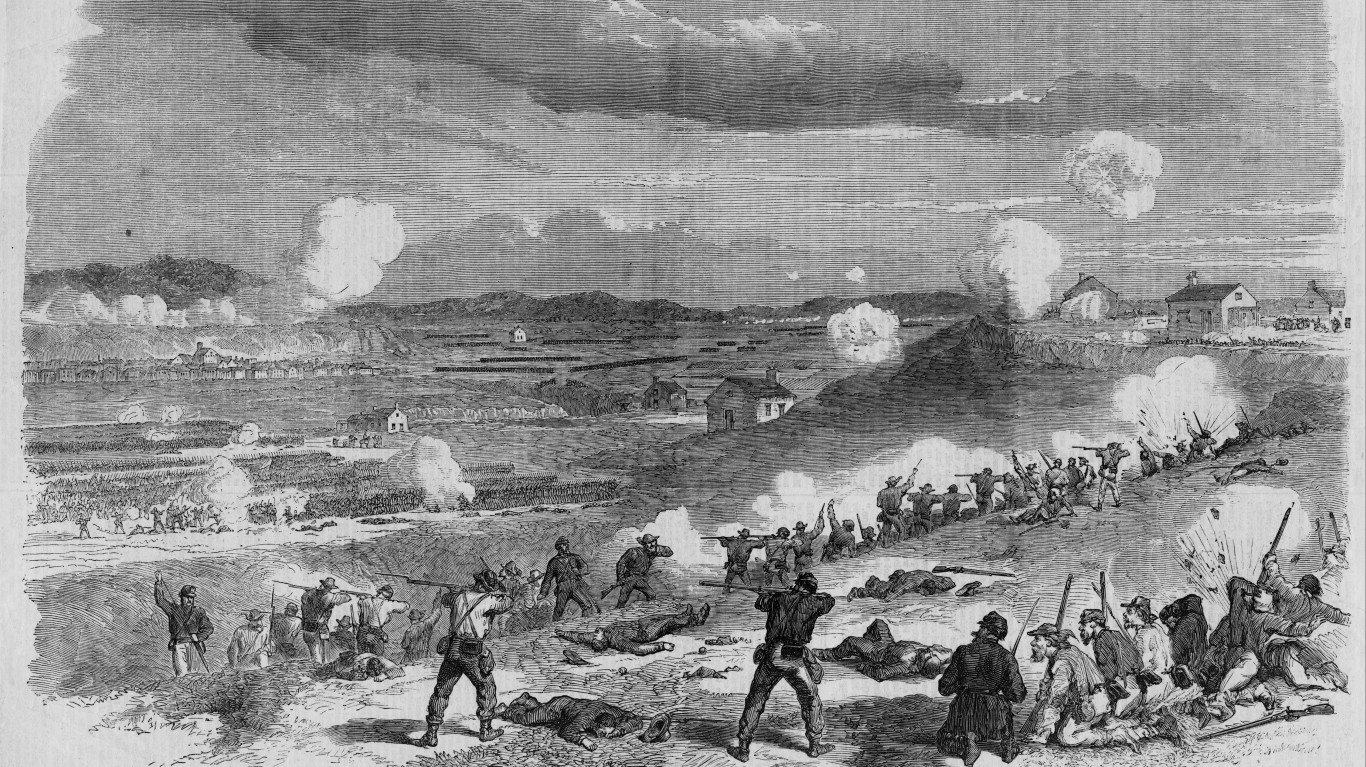
Fredericksburg, Virginia
> When: Dec. 11-14, 1862
The Battle of Fredericksburg, halfway between Richmond and Washington, D.C, was one of the most decisive victories for the South, with the Union Army suffering over 12,000 casualties. Union cannons however, did a number on the town. Nearly every house in the city bore signs of cannon damage, and certain quarters were completely demolished.
[in-text-ad]
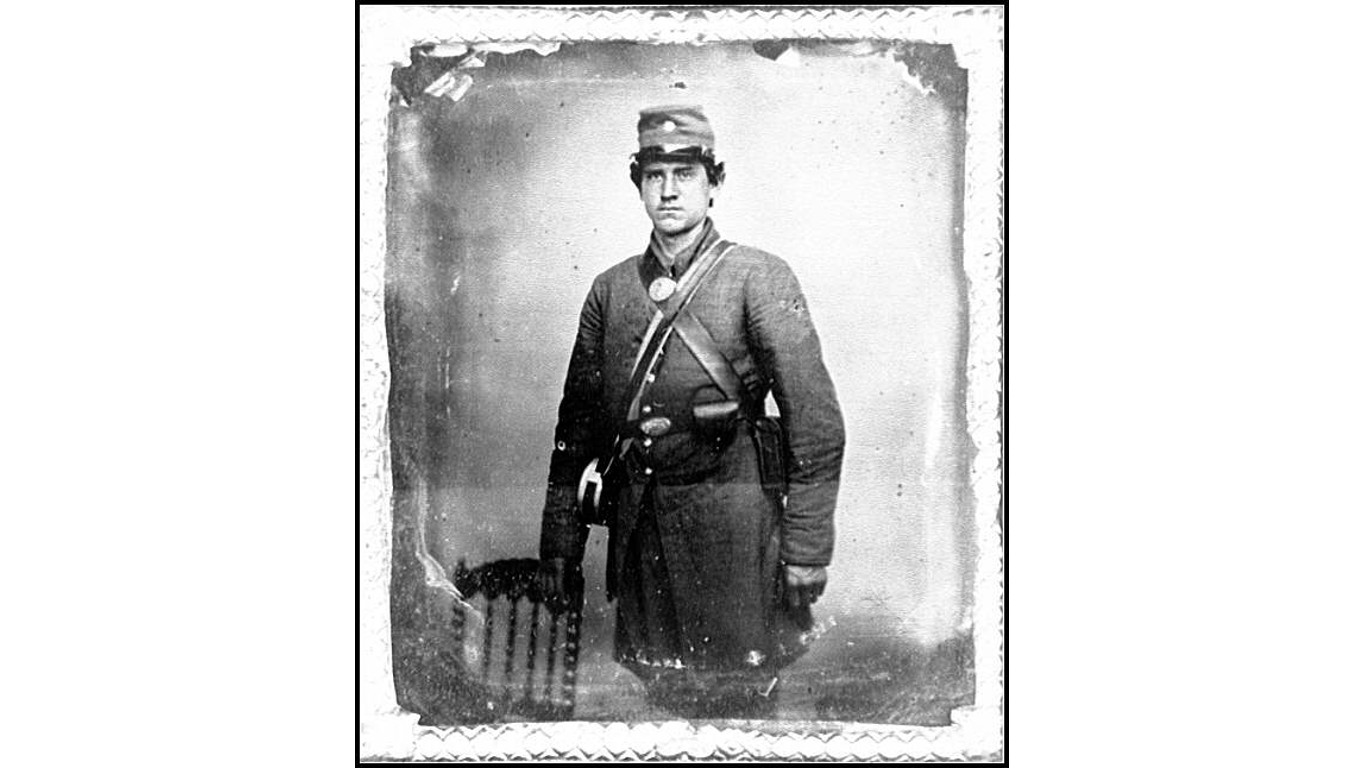
Celina, Tennessee
> When: April 19, 1863
This town near the Kentucky border saw many skirmishes and was the headquarters of a Confederate regiment that patrolled the area between Celina and Gainesville. In April 1863, Union cavalry shelled the town, destroying the Confederate camp and supply houses.
Greenville, Mississippi
> When: May 1863
During the siege of Vicksburg, a Union gunboat landed in Greenville, which lies north of Vicksburg along the Mississippi River. After coming under Confederate fire, troops from the gunboat burned down the entire town.
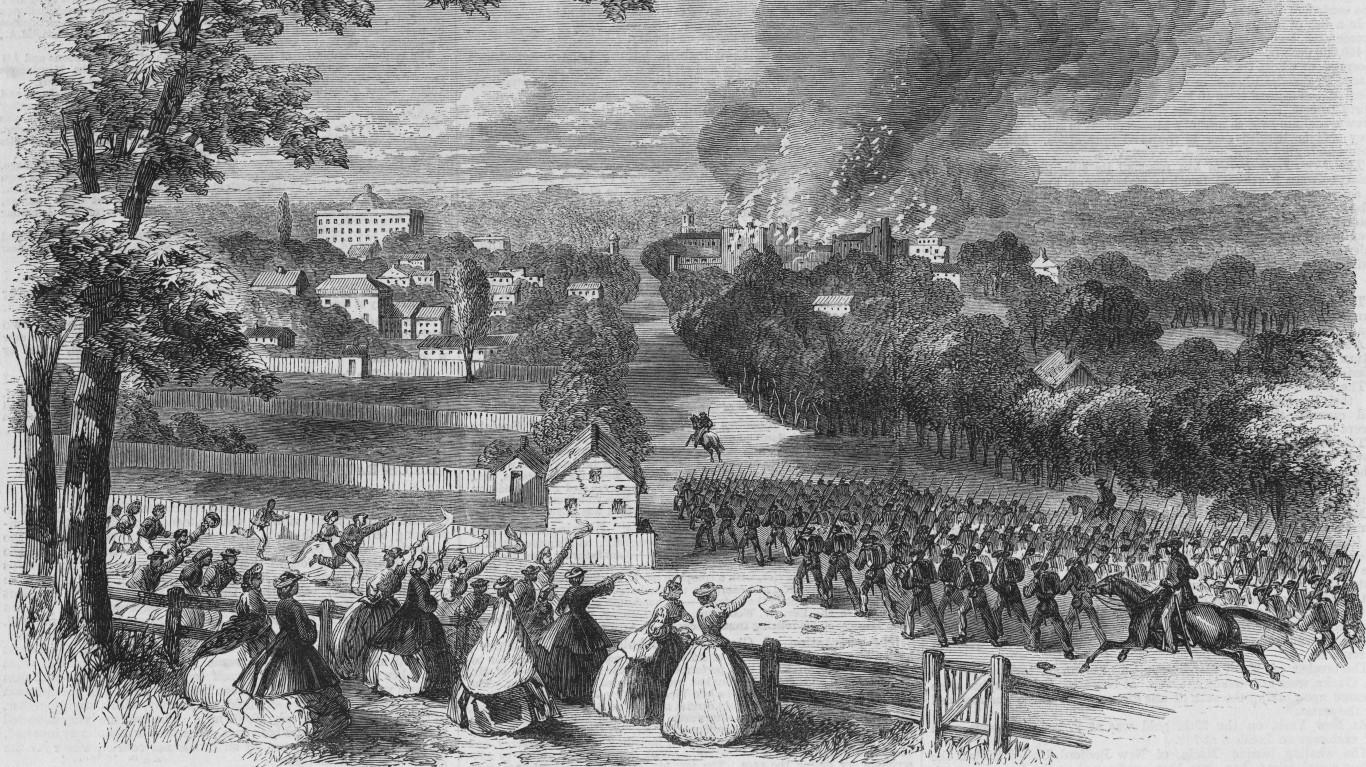
Jackson, Mississippi
> When: May 14, 1863
As a part of the Vicksburg campaign, Union troops under Generals Grant and Sherman seized the capital of Mississippi, which was an important supply and communications center. Confederates evacuated prior to the arrival of the Army of Tennessee, who proceeded to burn and destroy anything of military value including railroad tracks, telegraph lines, and factories.
[in-text-ad-2]
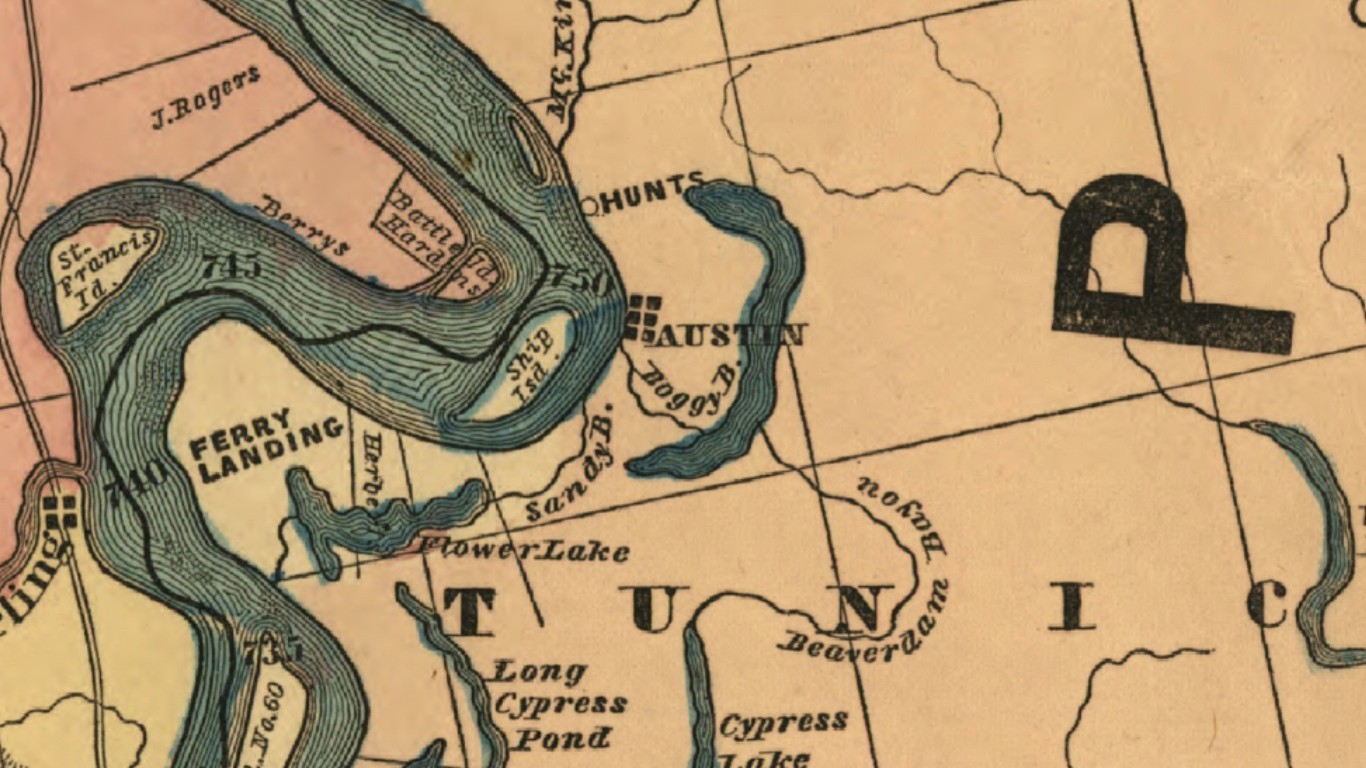
Austin, Mississippi
> When: May 24, 1863
The Mississippi Marine Brigade, a Union infantry troop that operated from ships and fought guerillas along the Mississippi River, stopped near the town of Austin in May 1863. They then marched to the town, ordered the townspeople to evacuate, and burned most of the buildings, leaving only two standing.
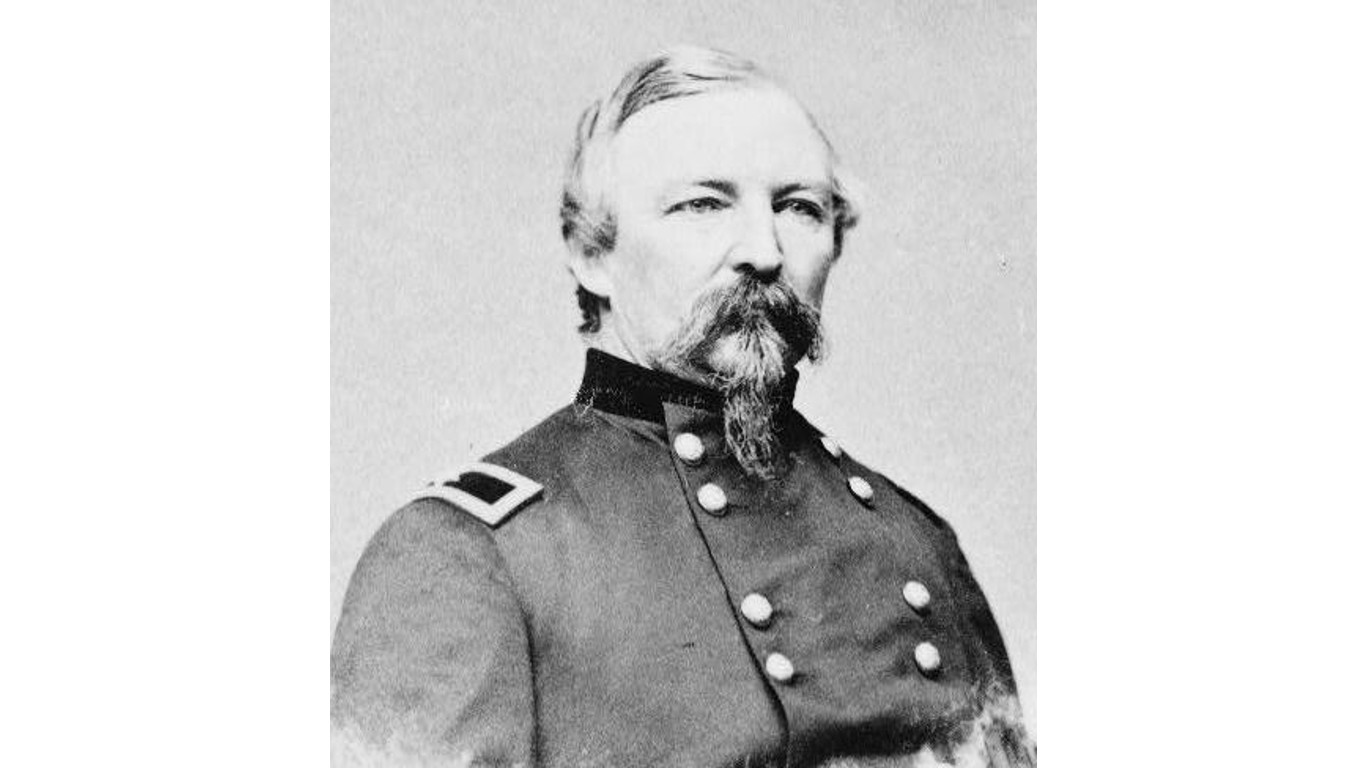
Hernando, Mississippi,
> When: June, 1863
In an area controlled by guerilla Confederate cavalry, this town south of Memphis, Tennessee was attacked by Federal troops in June 1863. Union forces then spent five days ransacking the area, burning the town’s courthouse, Masonic temple, jail, and residences used by rebel troops. In 1864, Union General Hatch also burned a hotel and many other buildings in the town.
[in-text-ad]
Bluffton, South Carolina
> When: June 6, 1863
The location of a secessionist movement long before the start of the war, this town just north of Savannah, Georgia was largely deserted after Union troops took over nearby Hilton Head island. Confederate troops, however, remained in the area. In June 1863, a convoy of Federal ships landed at Bluffton and torched most of the town’s houses and churches.
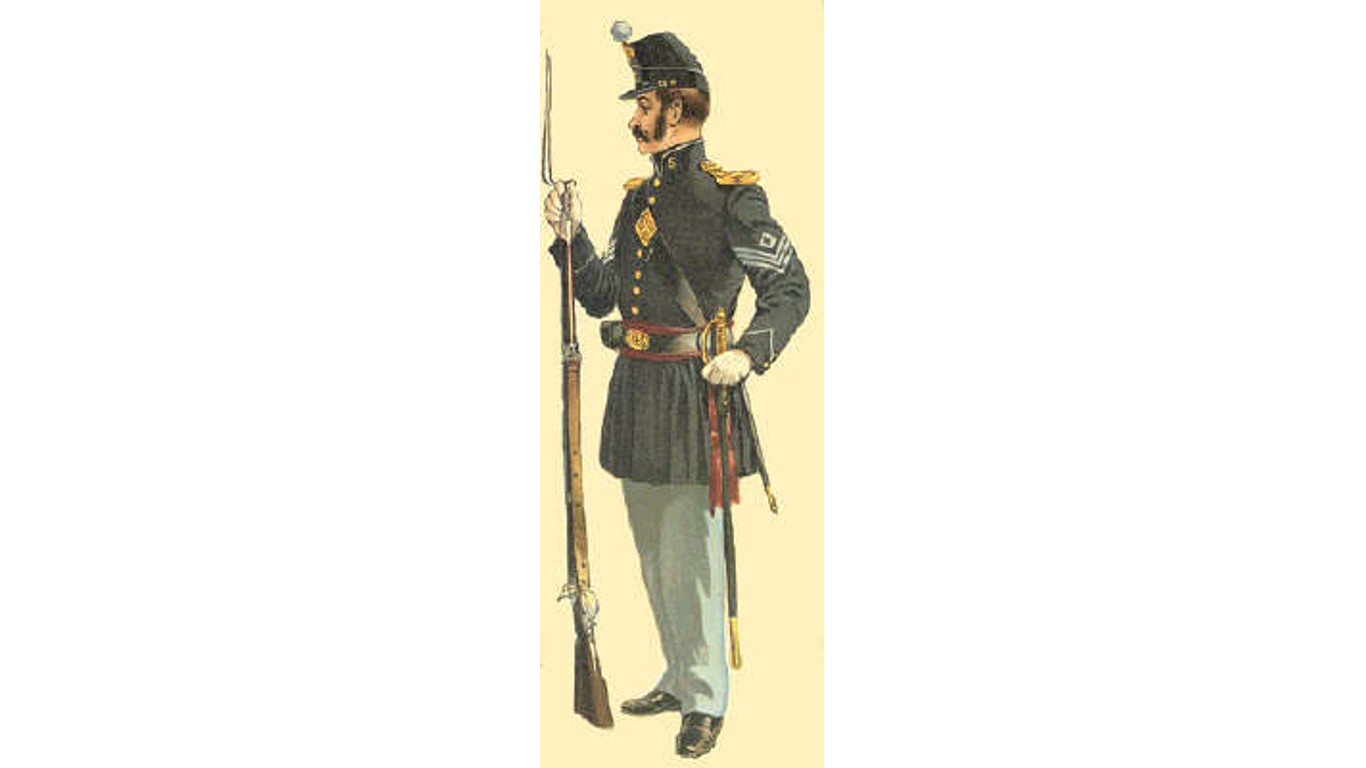
Darien, Mississippi
> When: June 11, 1863
A picturesque waterfront town that served as a major port, Darien was mostly abandoned by residents when Union troops burned the town down to its brick foundations. The entire business district was torched and ruins remain on the waterfront to this day.
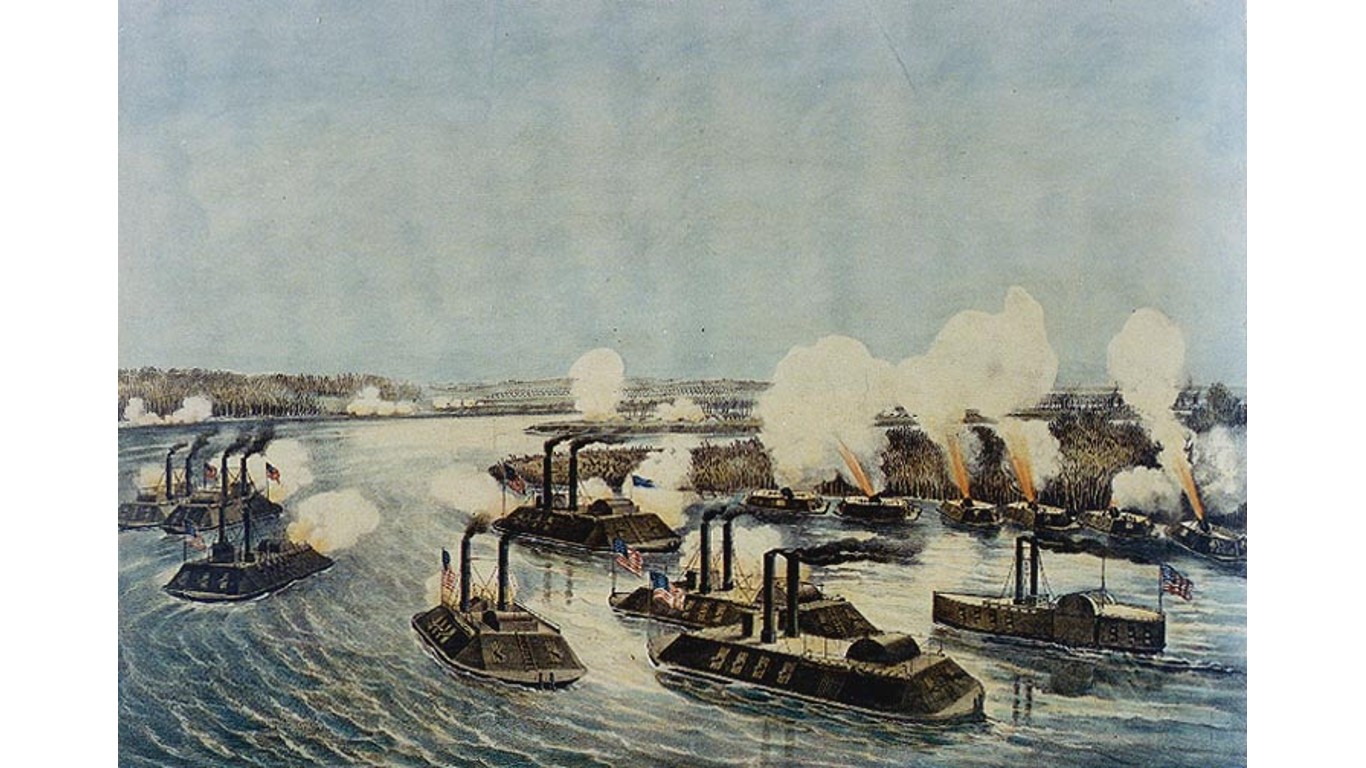
Eunice, Arkansas
> When: June 14, 1863
Union gunboats shelled this railroad town on the Mississippi River after coming under fire from Confederate guerillas. Federal troops then entered the town and set fire to any remaining houses, stores, and infrastructure. Eunice was never rebuilt, and nothing remains of the town today.
[in-text-ad-2]
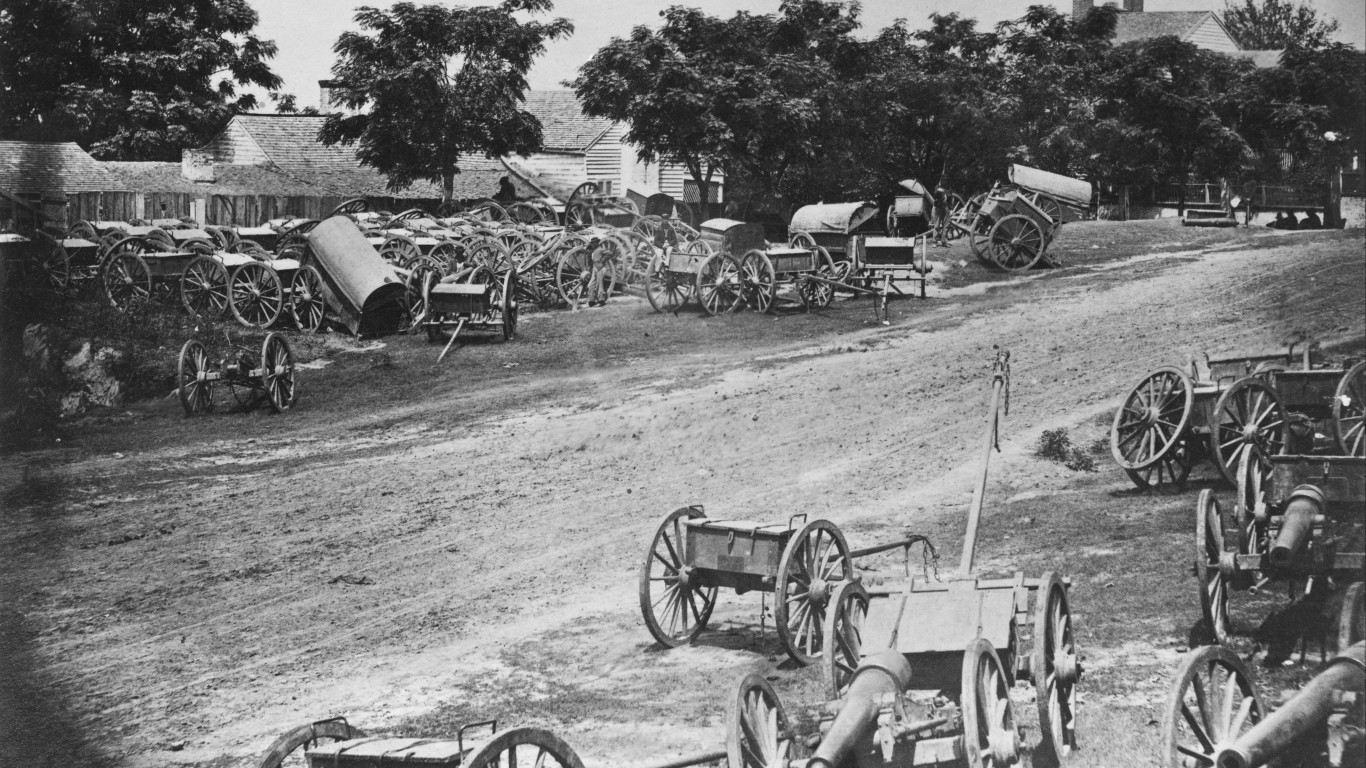
Vicksburg, Mississippi
> When: May 18 to July 4, 1863
An important Confederate stronghold on the Mississippi, Vicksburg was a pivotal railroad hub and supply port. After many failed attempts to take the city, the Union finally succeeded with General Grant’s 1863 campaign. Federals besieged and bombarded the city for 47 days until the rebels surrendered, with the town in ruins.
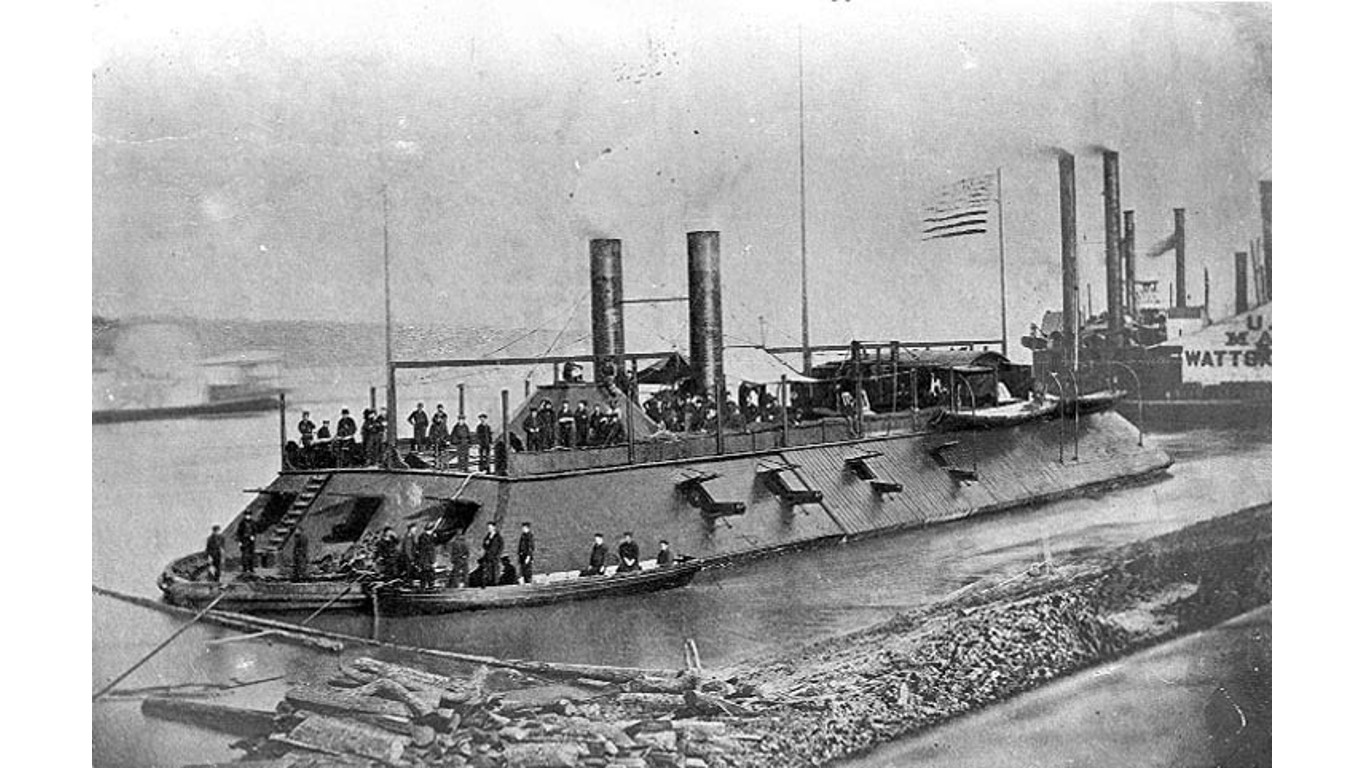
Old Columbus, Tennessee
> When: February 10, 1864
The town of Old Columbus, on the Cumberland River was a hotbed of Confederate guerilla and partisan activity. During a Union raid from Gainesboro, Ohio infantry chased Confederate rangers to the town. After ordering the women and children to evacuate, they burned Old Columbus to the ground. It was never rebuilt.
[in-text-ad]
Meridian, Mississippi
> When: February 14-20, 1864
Before General Sherman set off on his Savannah campaign, he marched across central Mississippi from Vicksburg to Meridian. With a force of 20,000, Sherman spent a week in the town of Meridian, which was the crossroads of two rail lines, destroying houses and infrastructure, and looting valuables. Most of Meridian was burned to the ground.
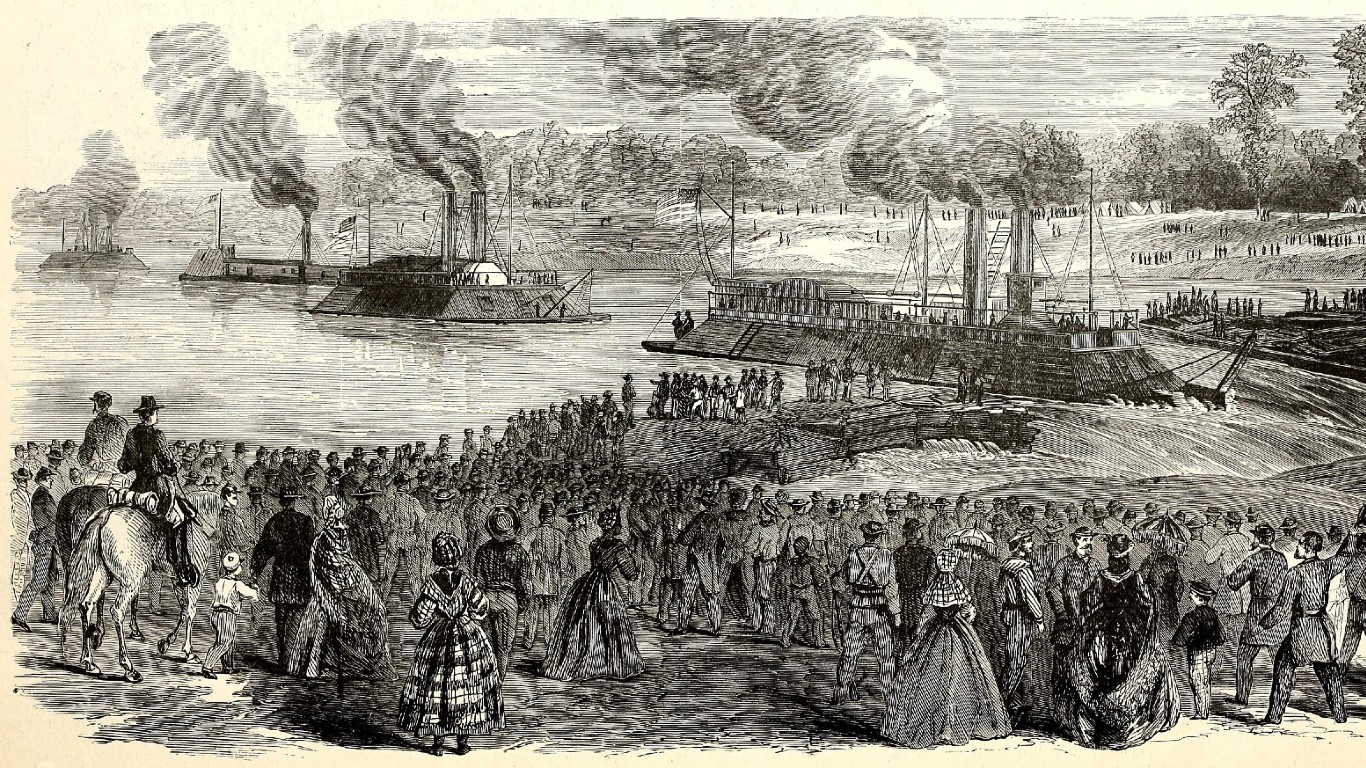
Alexandria, Louisiana
> When: May 13, 1864
During the Union’s Red River campaign, Union forces occupied this riverside city until May 1864, when they retreated after burning down 90 percent of the structures. Churches, residences, libraries, businesses, a dam, and other public works infrastructure were all destroyed within a 22-block area.
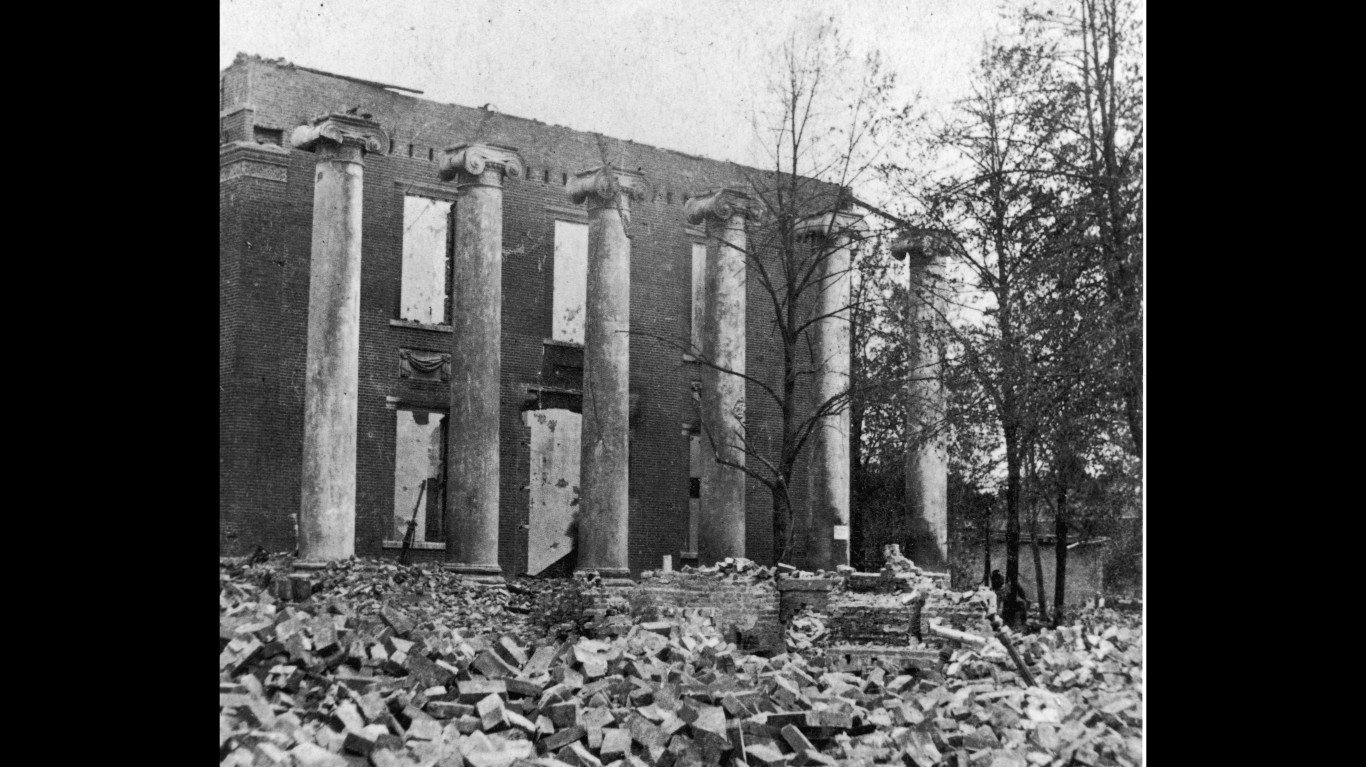
Chambersburg, Pennsylvania
> When: July 30, 1864
Confederate cavalry rode into this southern Pennsylvania town and demanded $100,000 in gold, which the townsfolk failed to raise. The troops then shelled and burned the town, destroying over 500 structures. Chambersburg would be the only Northern town that the Confederacy destroyed during the war.
[in-text-ad-2]
Oxford, Mississippi
> When: August 22, 1864
Union troops entered this college town while pursuing the army of General Nathan Bedford Forrest, days after Forrest had left in order to raid Memphis. The Union forces then burned and pillaged the town, including parts of the university, businesses, the courthouse, warehouses, and residences.
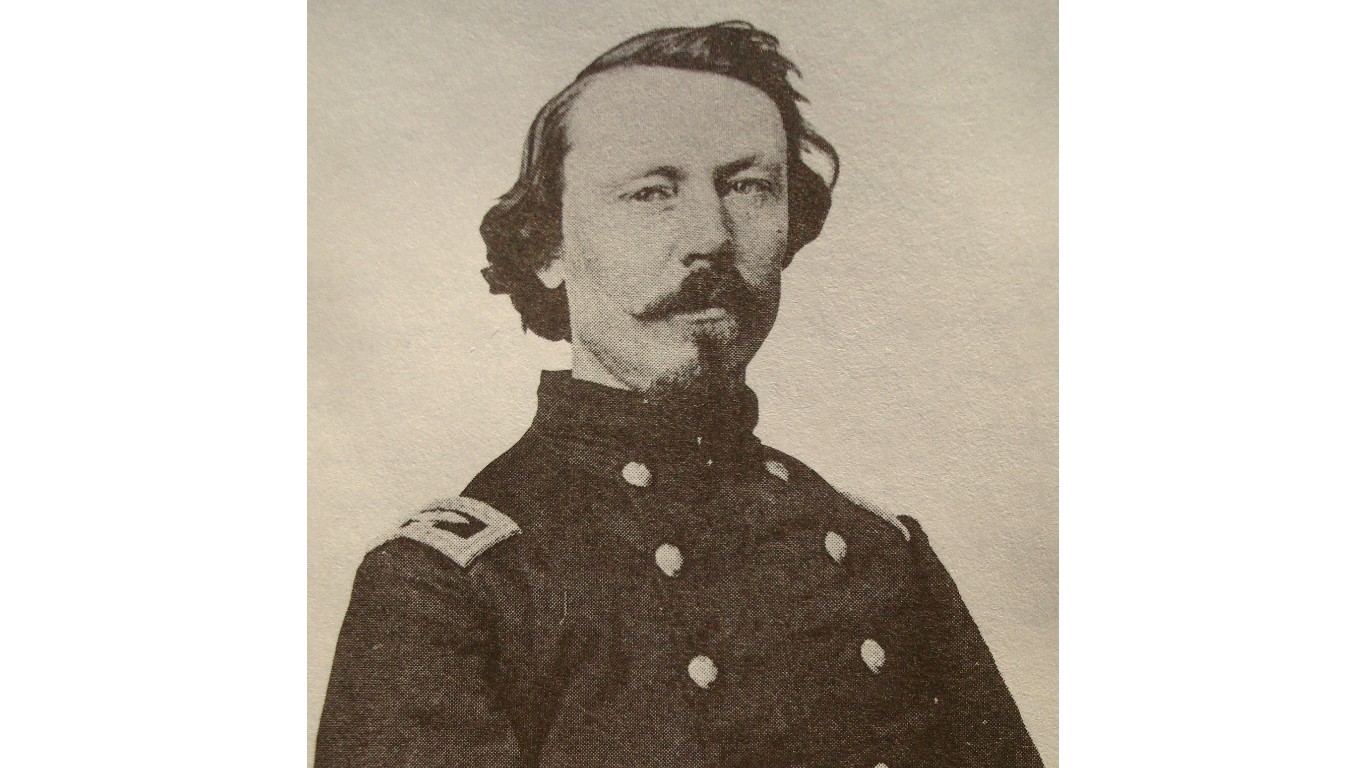
Rome, Georgia
> When: November 11, 1864
A center of manufacturing and rail transport, Rome became a major target for Union destruction. After a failed raid in May 1863, Union forces finally garrisoned the city in May 1864. Before Union troops abandoned the city later that year as they prepared to march east, they destroyed all usable infrastructure including foundries, mills, railroads, bridges, and factories.
[in-text-ad]
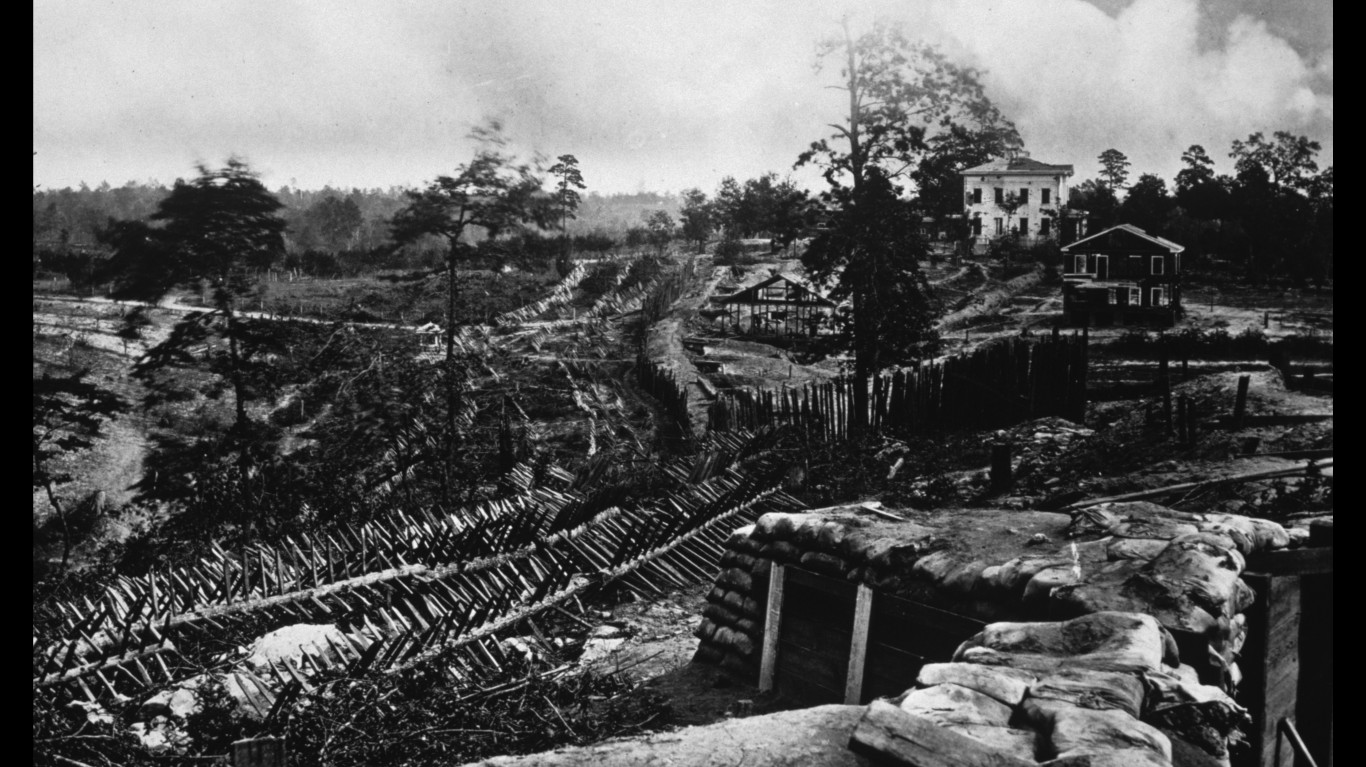
Atlanta, Georgia
> When: November 15, 1864
Prior to General Sherman’s march to the sea (known as the Savannah campaign), his troops burned the captured city of Atlanta. They destroyed over 3,000 buildings with the aim of cutting off Confederate supply lines. Despite not having orders to burn residences, Union soldiers began burning homes days before their departure to Savannah.
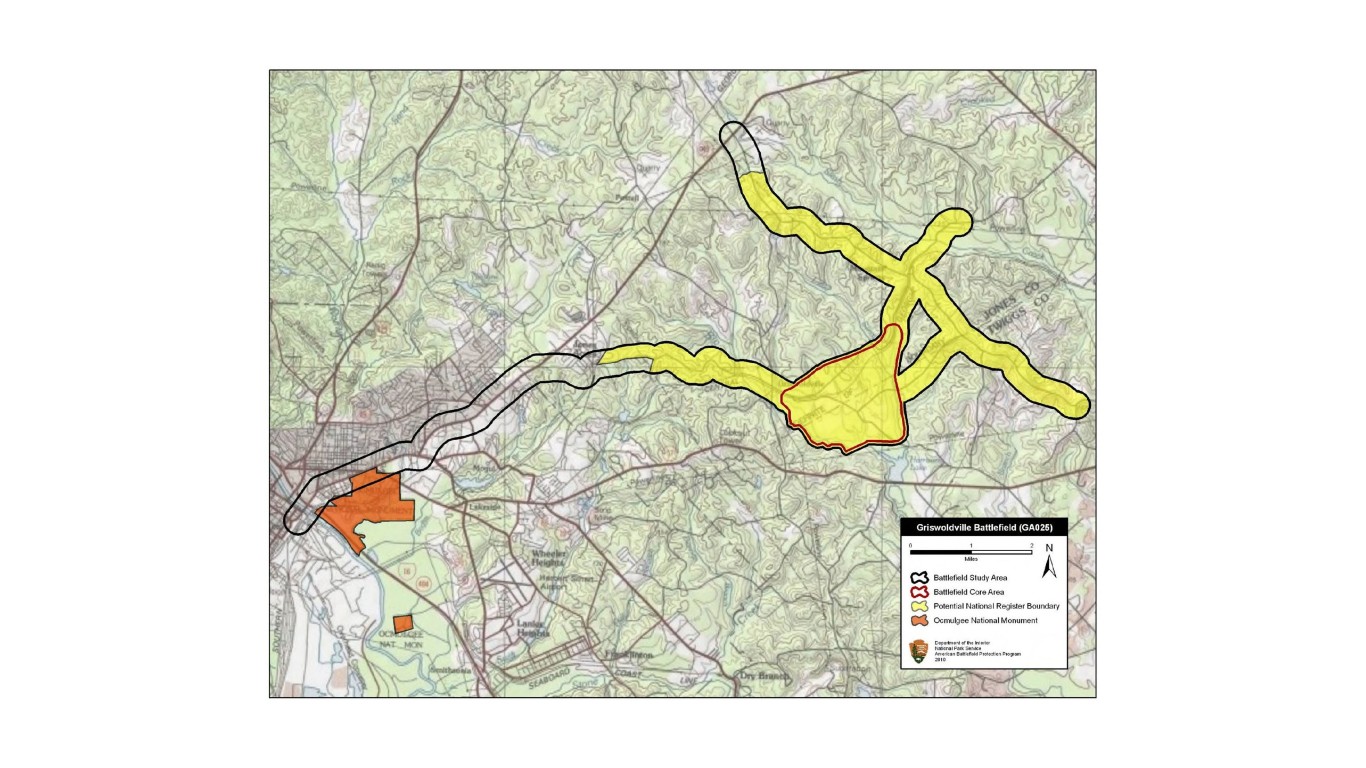
Griswoldville, Georgia
> When: November 21, 1864
This industrial village was the site of the Griswold and Grier Confederate revolver factory, which was housed in a converted cotton gin plant. During General Sherman’s march to the sea, Federal cavalry burned the gun factory, as well as a soap and candle factory, train cars loaded with supplies, and other industrial facilities.
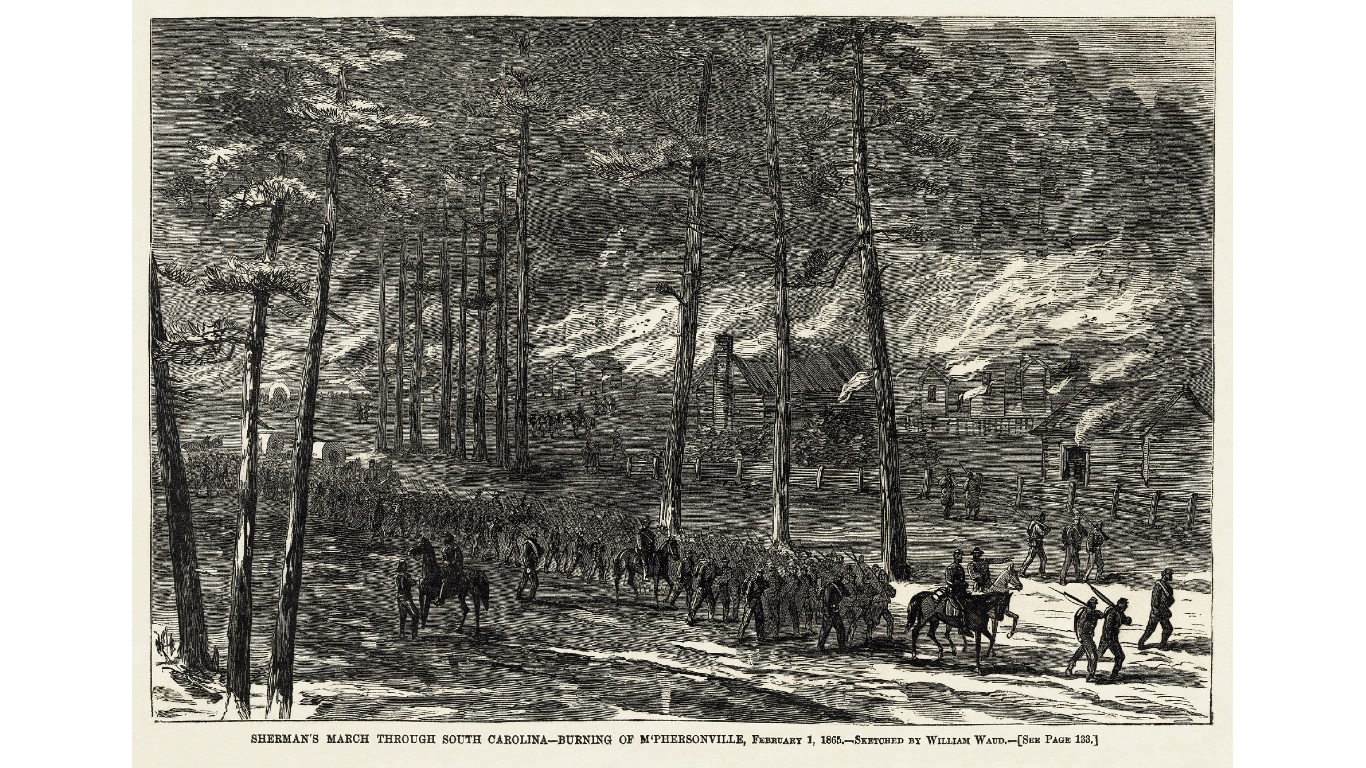
McPhersonville, South Carolina
> When: January 20, 1865
After capturing the city of Savannah, Georgia, General Sherman’s troops crossed into South Carolina, where they burned the village of McPhersonville, which contained many summer homes and a Presbyterian chapel. The church was spared from the flames, but the rest of the village was destroyed.
[in-text-ad-2]
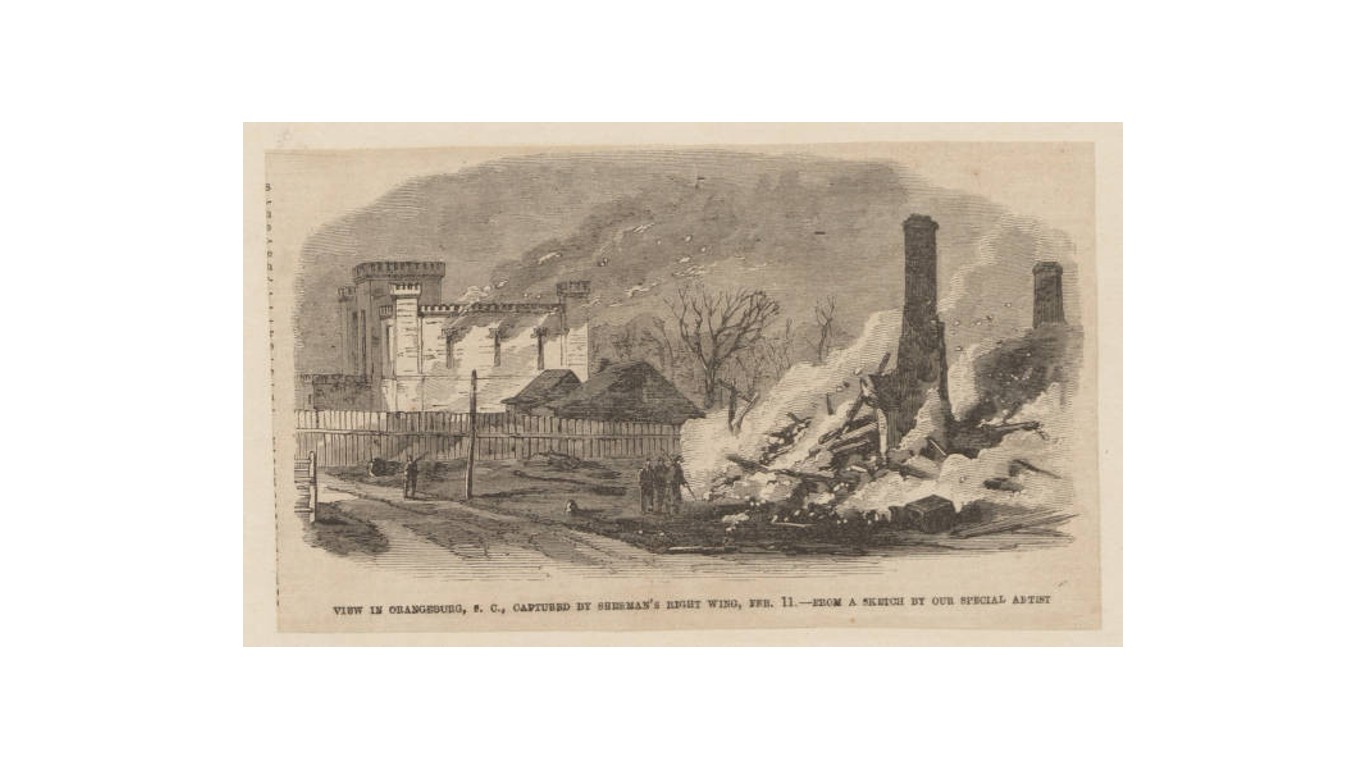
Orangeburg, South Carolina
> When: February 12, 1865
On their way to destroy Columbia, the South Carolina capital, Federal troops under General Sherman reached Confederate forces at Orangeburg and began shelling the town. As rebel forces retreated, Union troops moved into the town and burned residences, businesses, and public buildings. About half the town was incinerated.
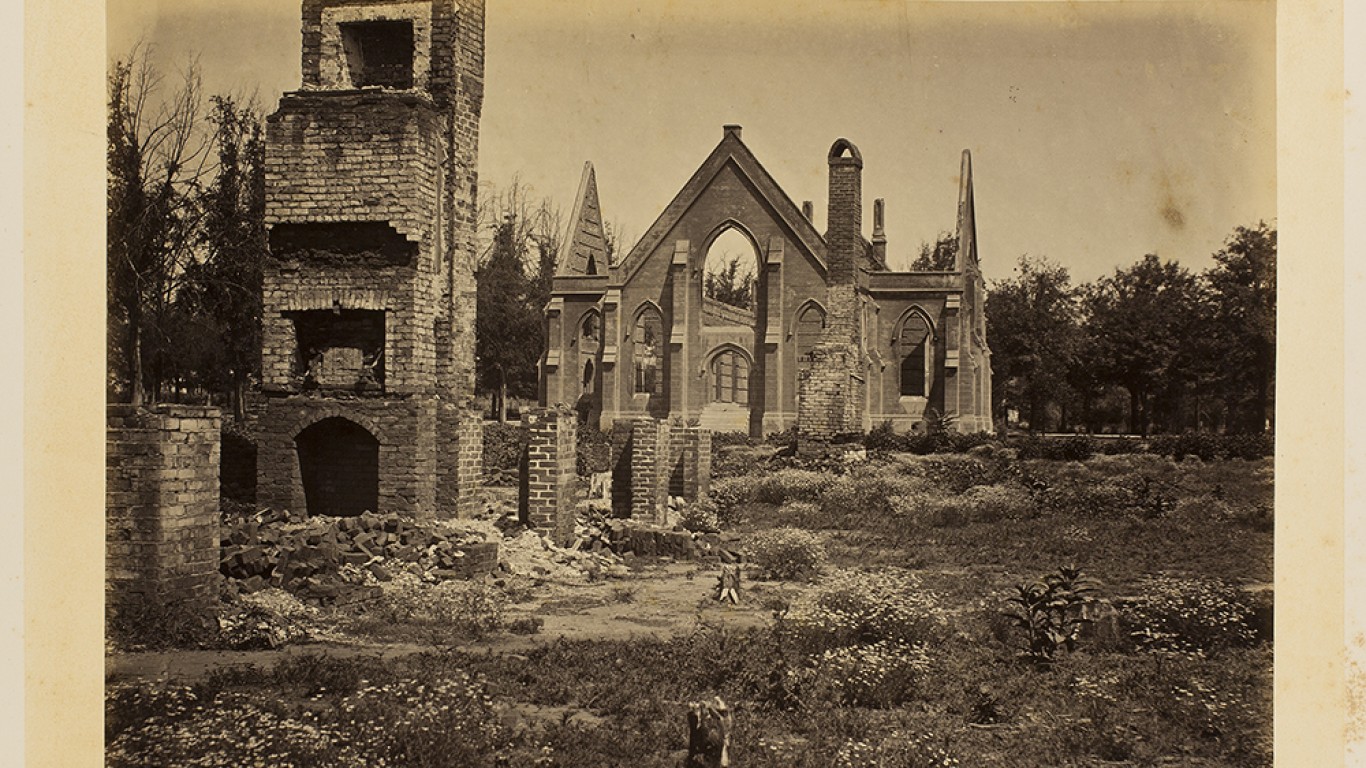
Columbia, South Carolina
> When: February 17, 1865
As federal forces under General Sherman arrived to take South Carolina’s capital, fleeing Confederate troops began burning supplies and cotton to keep them from falling into Union hands. Union soldiers then poured into Columbia and wreaked havoc on anything of military value. High winds then spread the flames that burned two thirds of the city.
[in-text-ad]

Charleston, South Carolina
> When: July 10, 1863 – February 18, 1865
An early leader in the secessionist movement, Charleston remained in Confederate hands until late in the war, although it was under siege beginning in July 1863. The nearly constant bombardment destroyed much of the city. A day after Federal troops took Columbia, the mayor of Charleston surrendered the city to the Union.
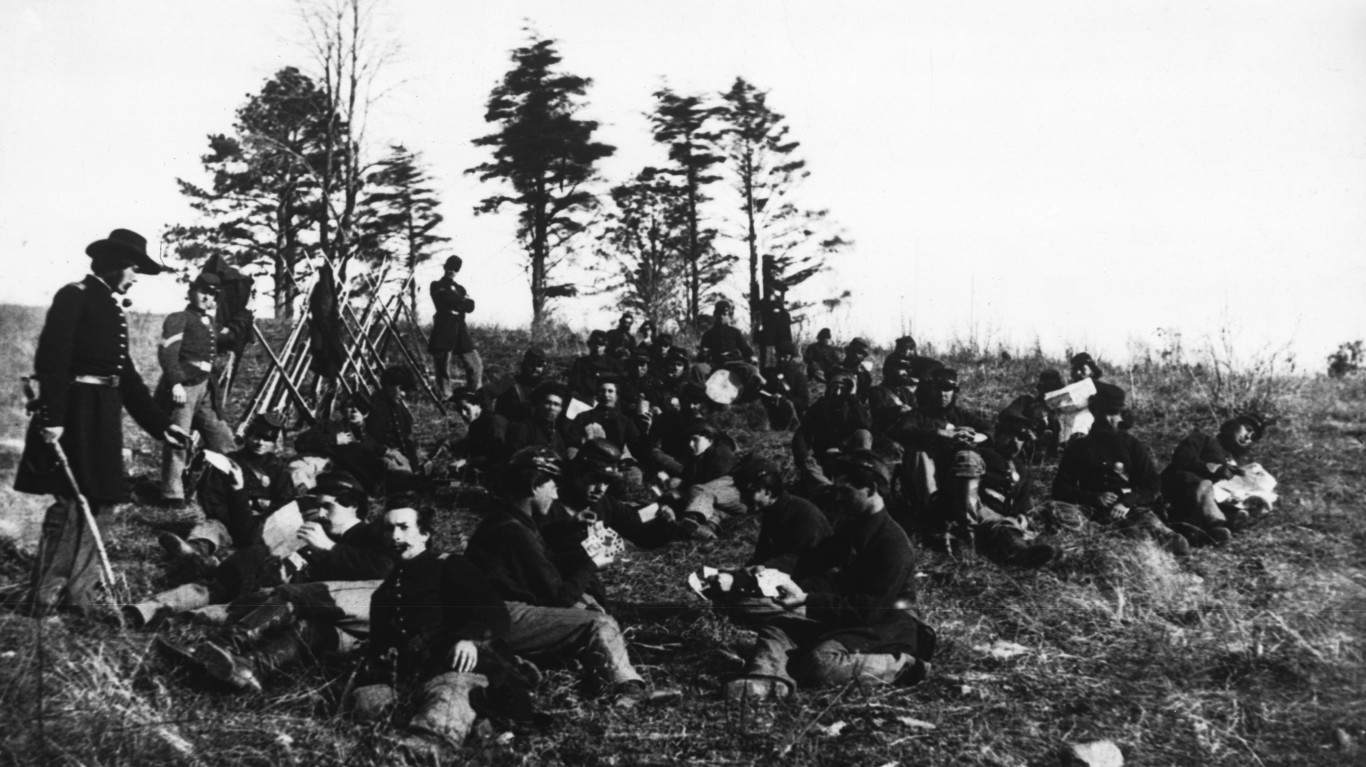
Petersburg, Virginia
> When: August 1864 to April 1865
Near the Confederate capital, Petersburg was a crucial supply center for the rebel army. Union forces under General Grant besieged the city for nearly 300 days, causing massive damage to over 600 structures and forcing General Lee to retreat from Richmond before his eventual surrender.
Tuscaloosa, Alabama
> When: April 4, 1865
Mere days before General Lee surrendered in Virginia, Federal troops marched from Birmingham to Tuscaloosa and burned much of the University of Alabama – which was in use as a military training facility – as well as several factories and stores, before heading on to destroy an arsenal in Selma.
[in-text-ad-2]
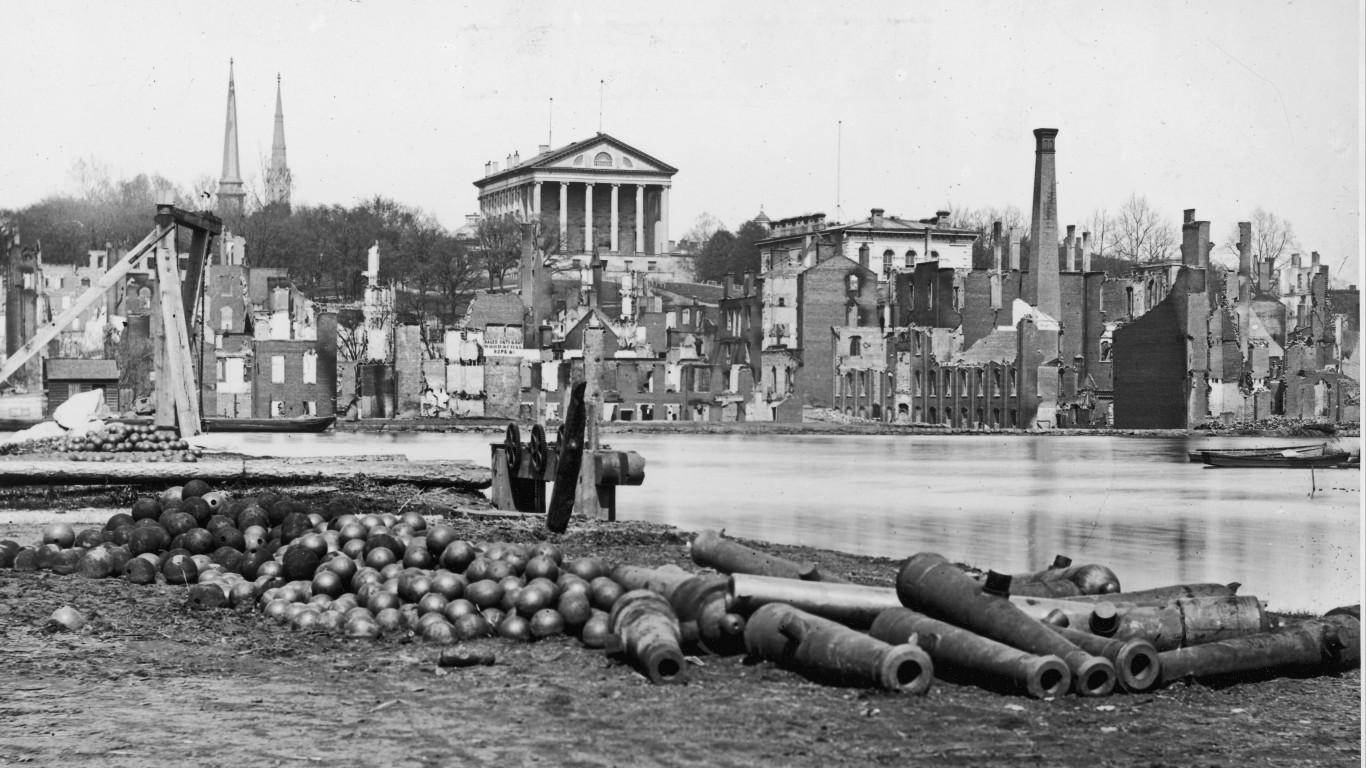
Richmond, Virginia
> When: April 2, 1865
As Confederate troops abandoned their capital at the end of the siege of Petersburg, they burned infrastructure that they didn’t want the Union to utilize, including an armory, tobacco warehouses, and bridges. The resulting blaze destroyed much of Richmond’s central business district.
Are You Ahead, or Behind on Retirement? (sponsor)
If you’re one of the over 4 Million Americans set to retire this year, you may want to pay attention.
Finding a financial advisor who puts your interest first can be the difference between a rich retirement and barely getting by, and today it’s easier than ever. SmartAsset’s free tool matches you with up to three fiduciary financial advisors that serve your area in minutes. Each advisor has been carefully vetted, and must act in your best interests. Start your search now.
Don’t waste another minute; get started right here and help your retirement dreams become a retirement reality.
Thank you for reading! Have some feedback for us?
Contact the 24/7 Wall St. editorial team.
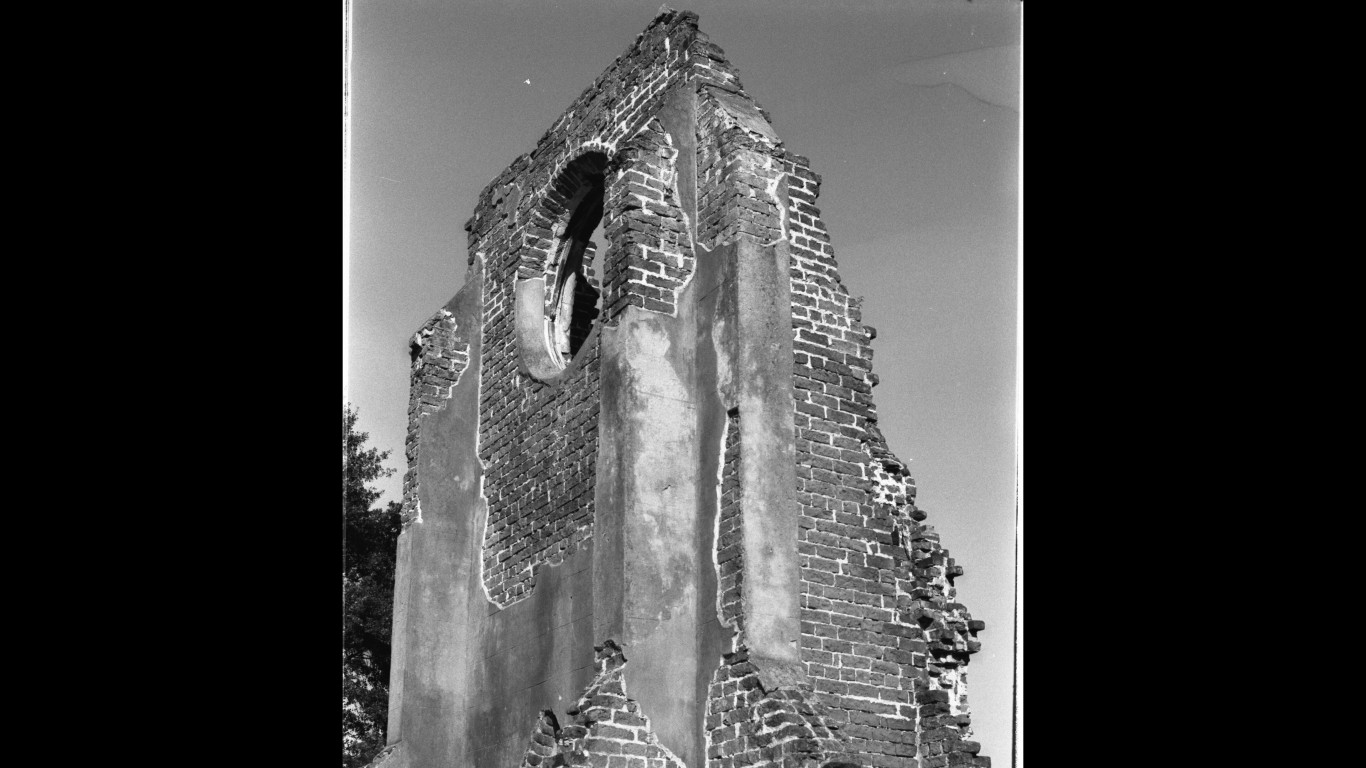
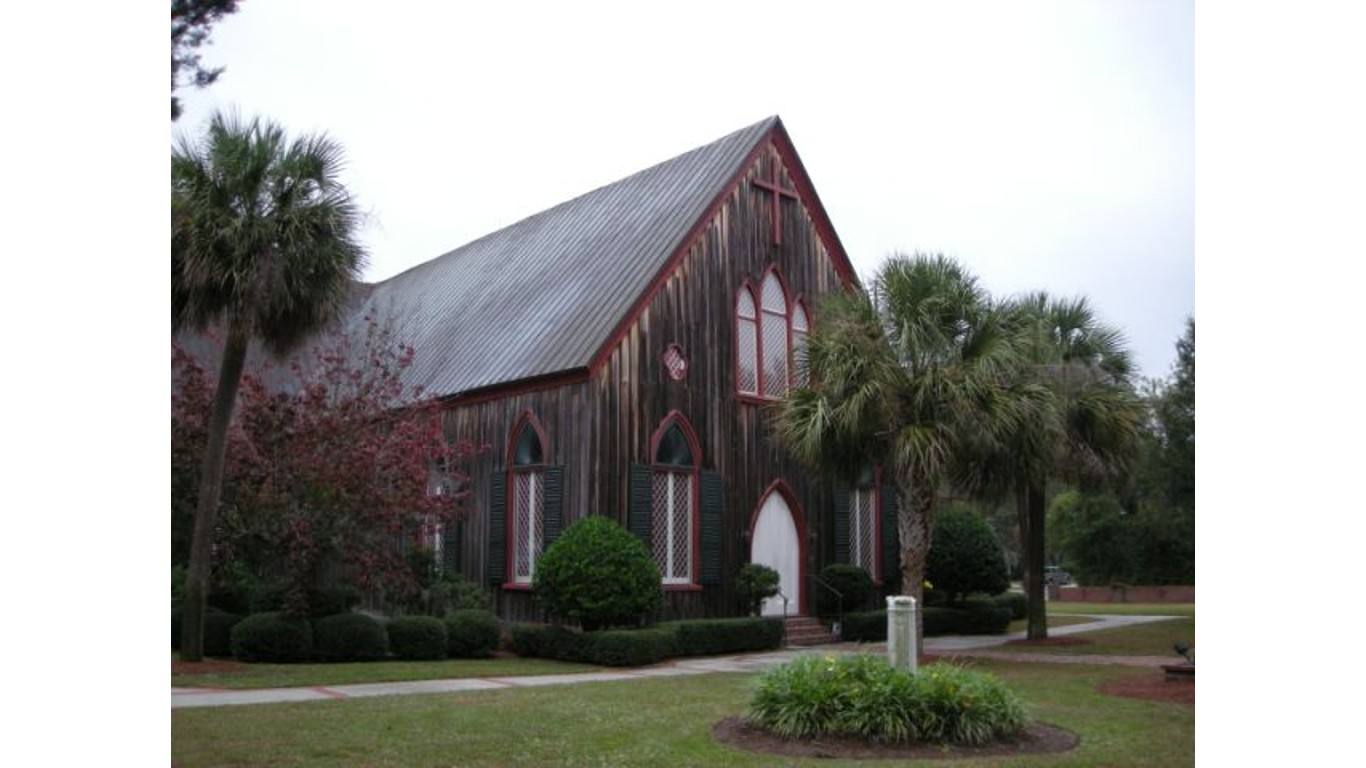
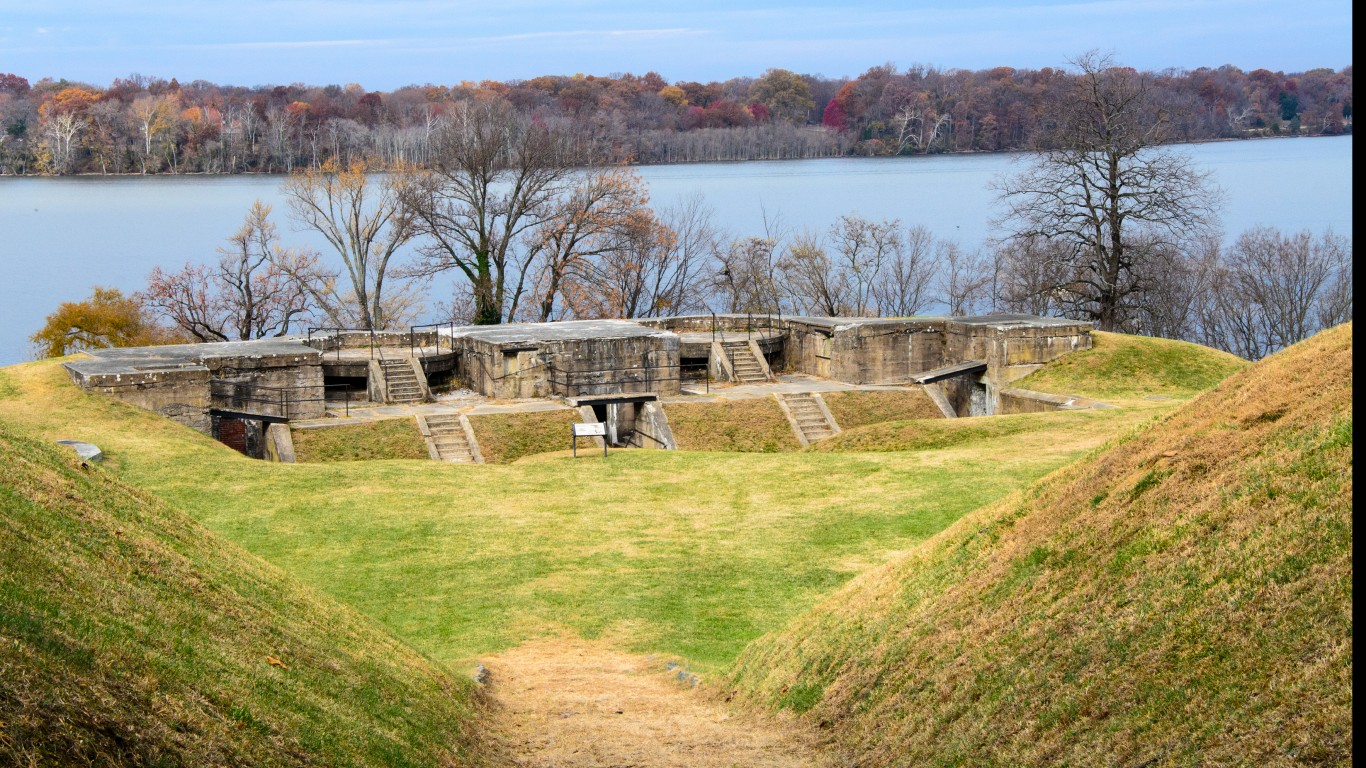 24/7 Wall St.
24/7 Wall St.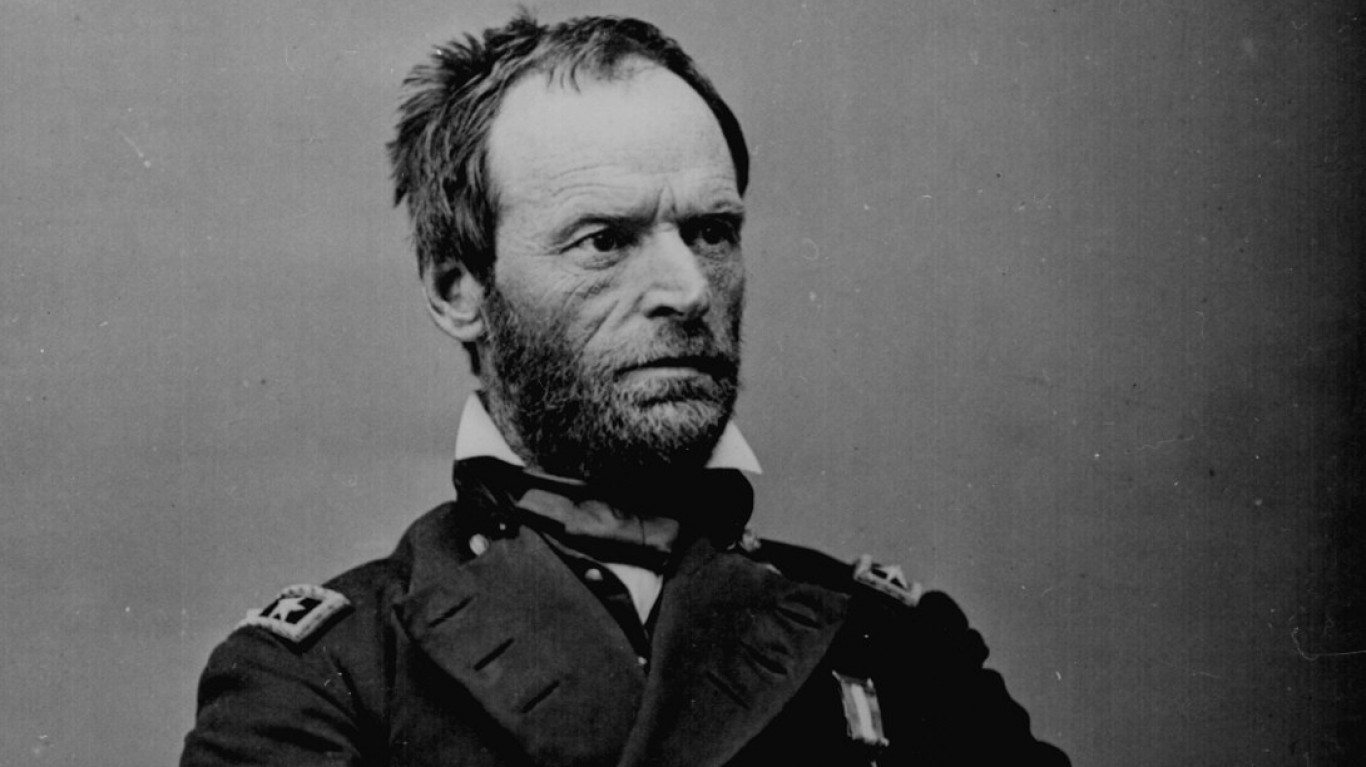
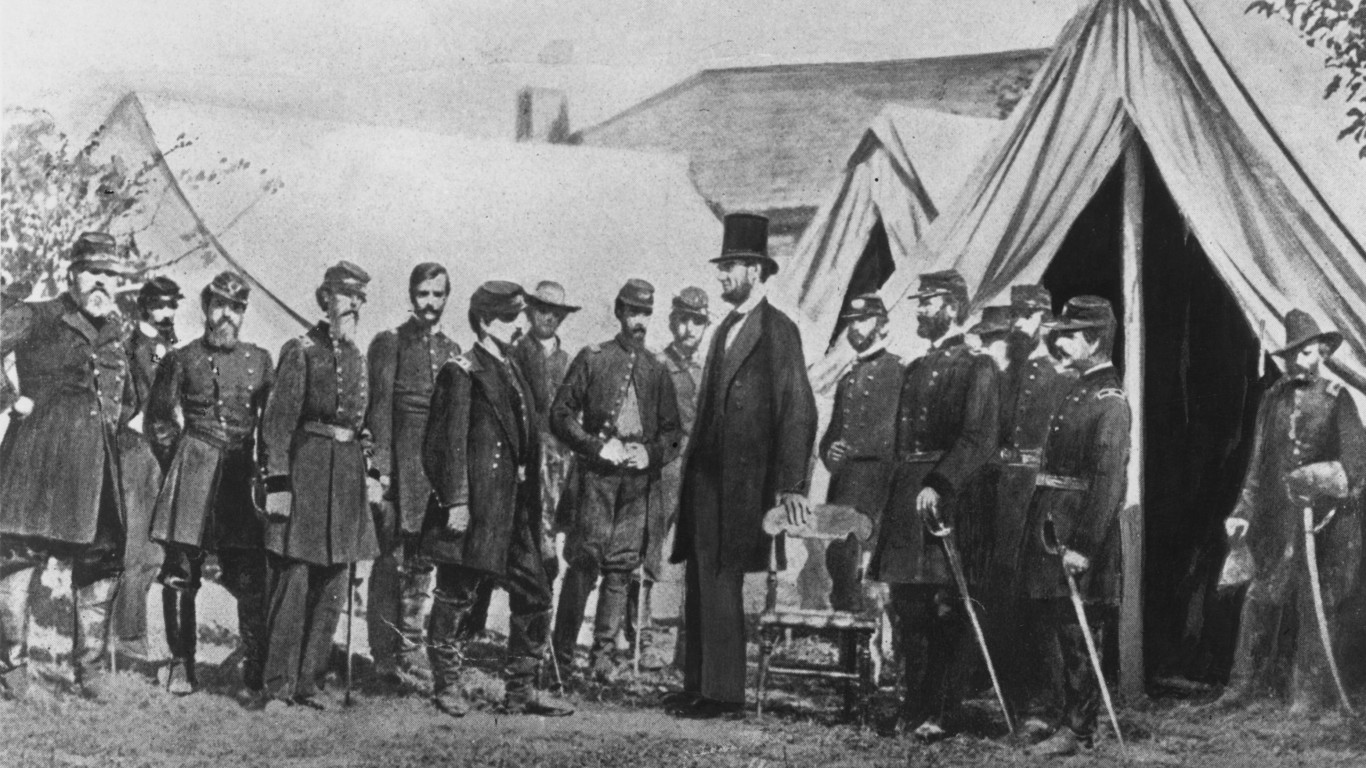 24/7 Wall St.
24/7 Wall St.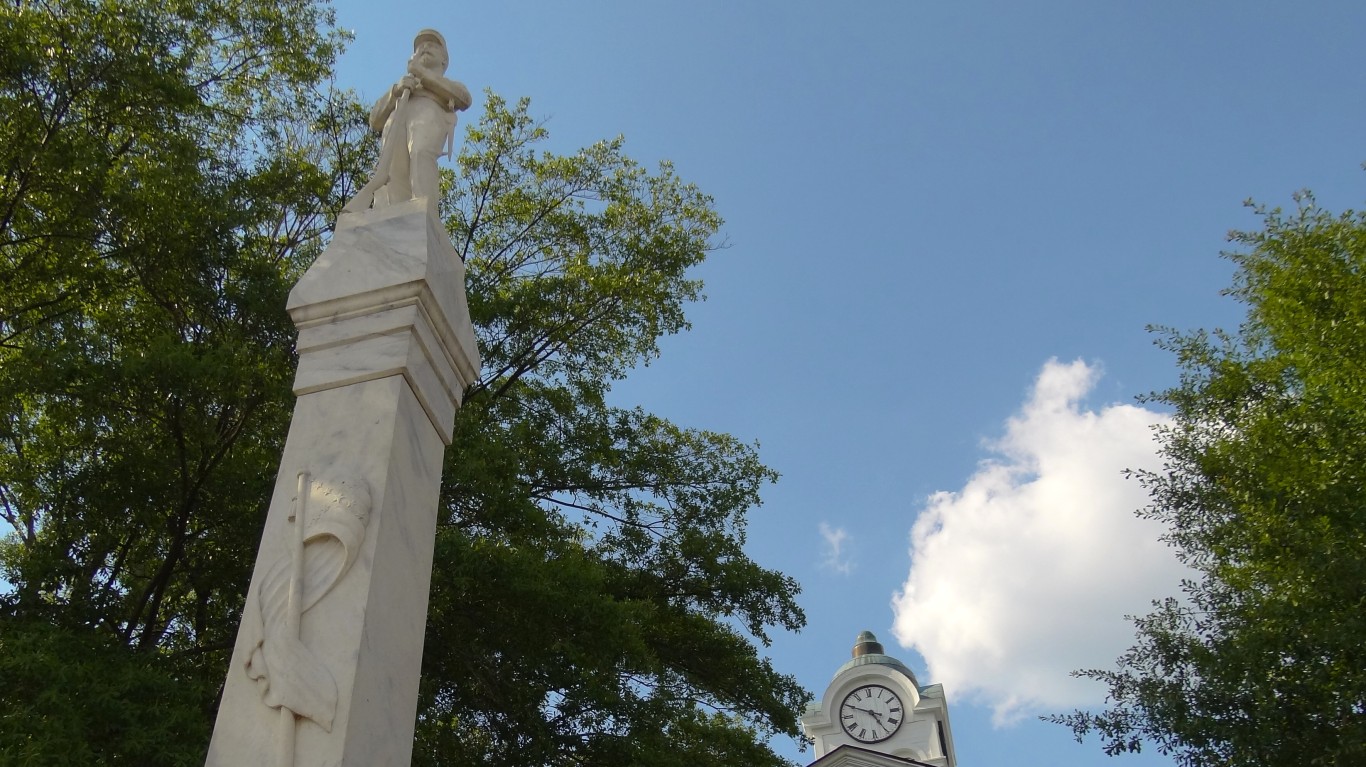
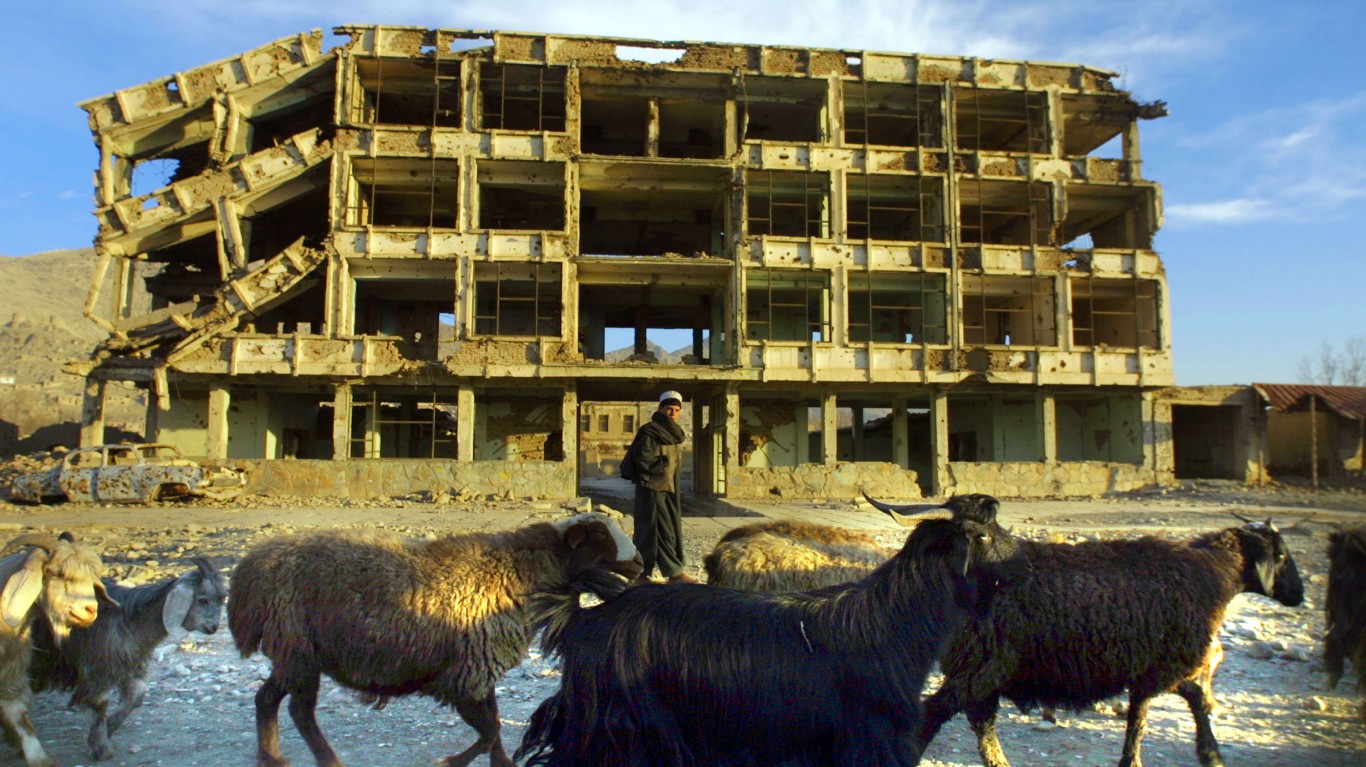 24/7 Wall St.
24/7 Wall St.